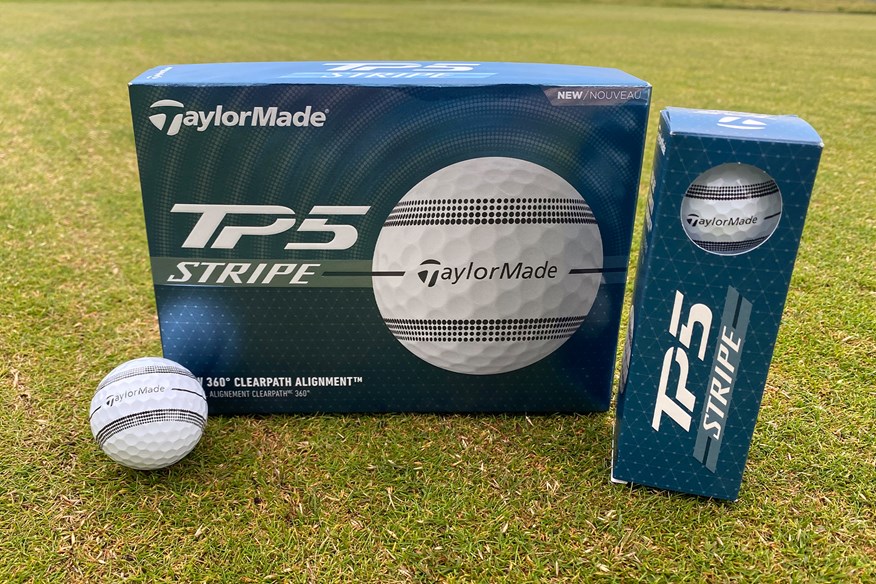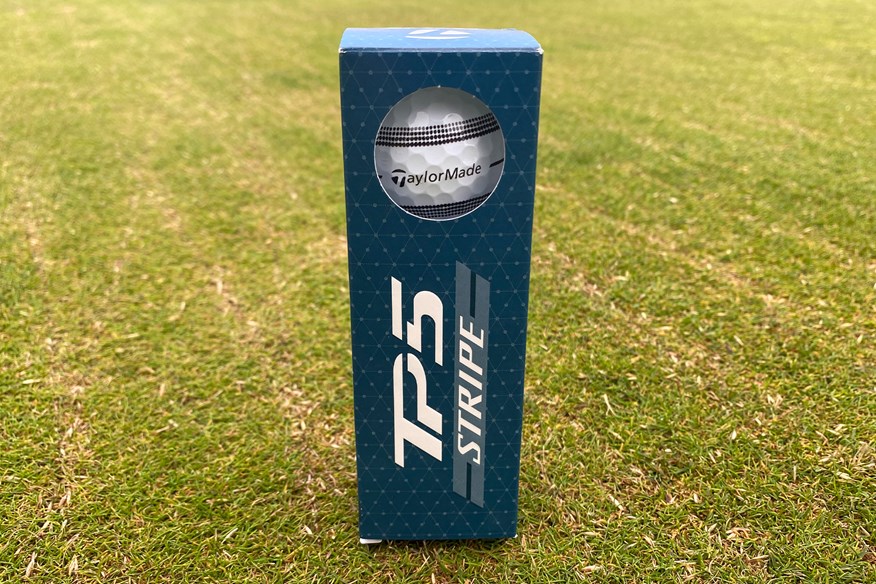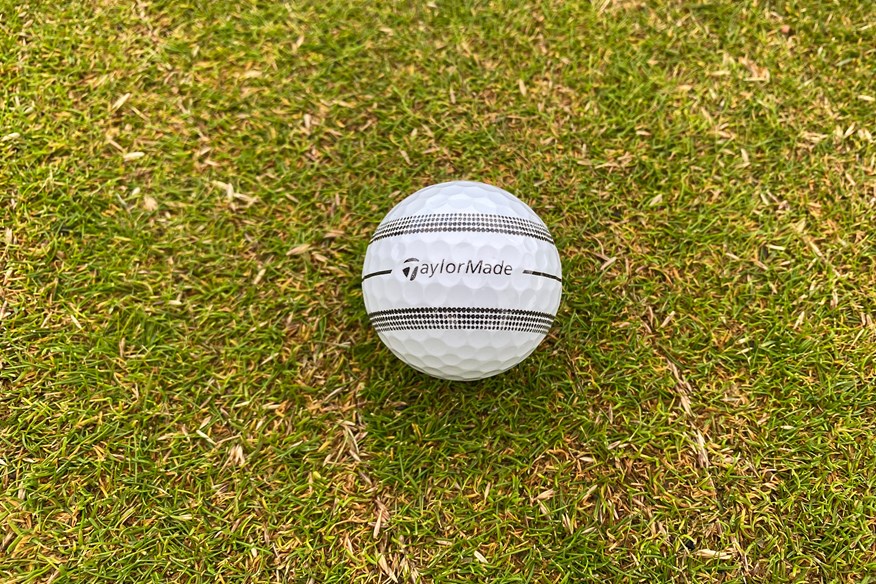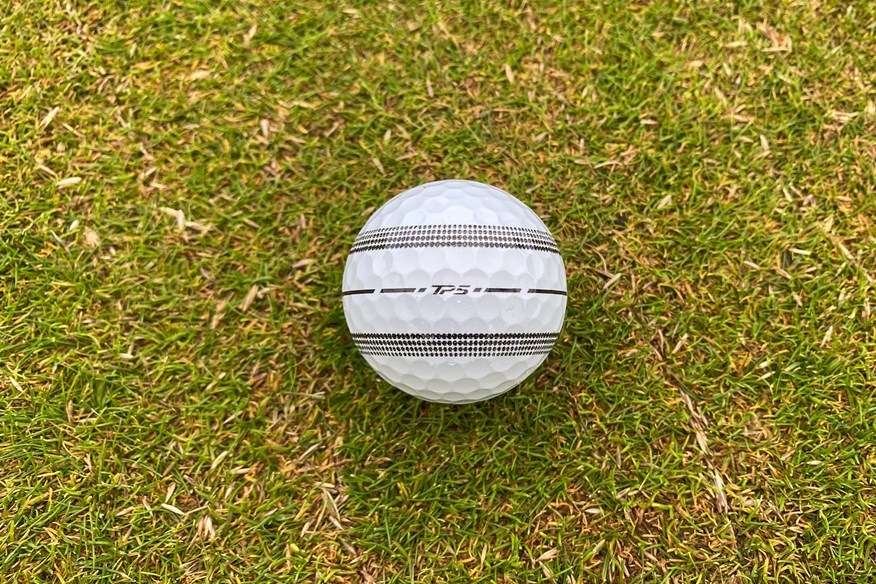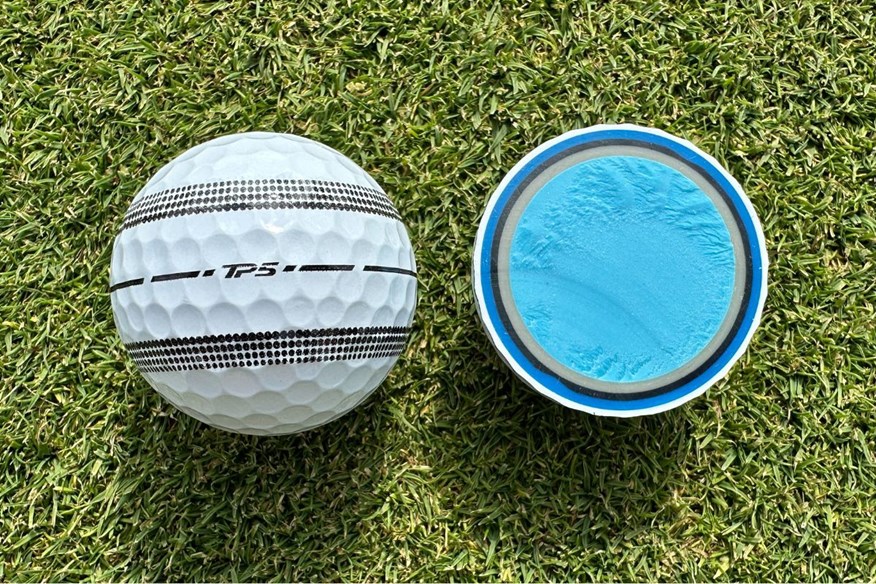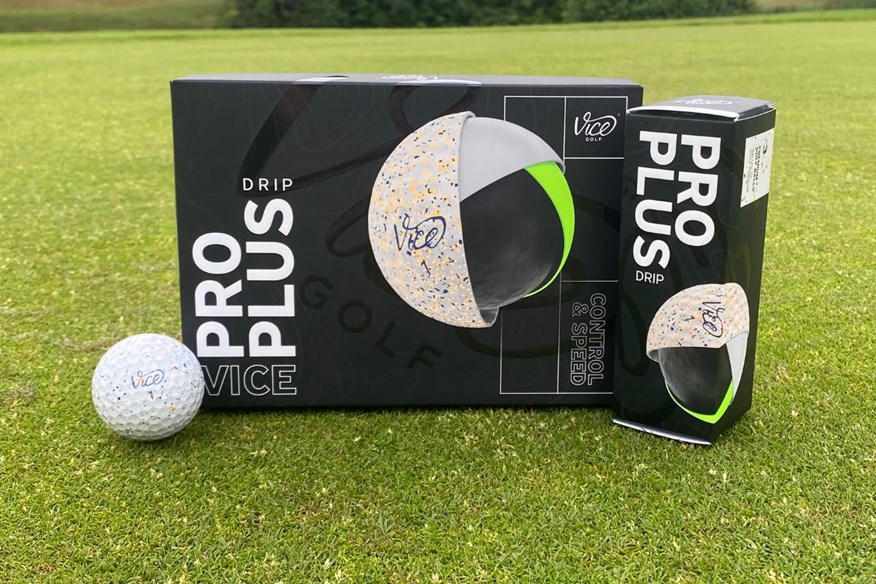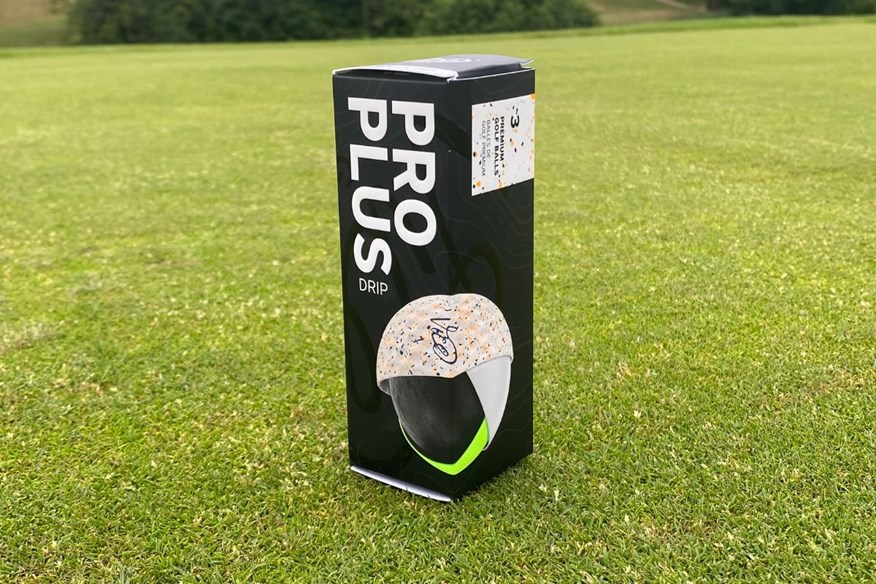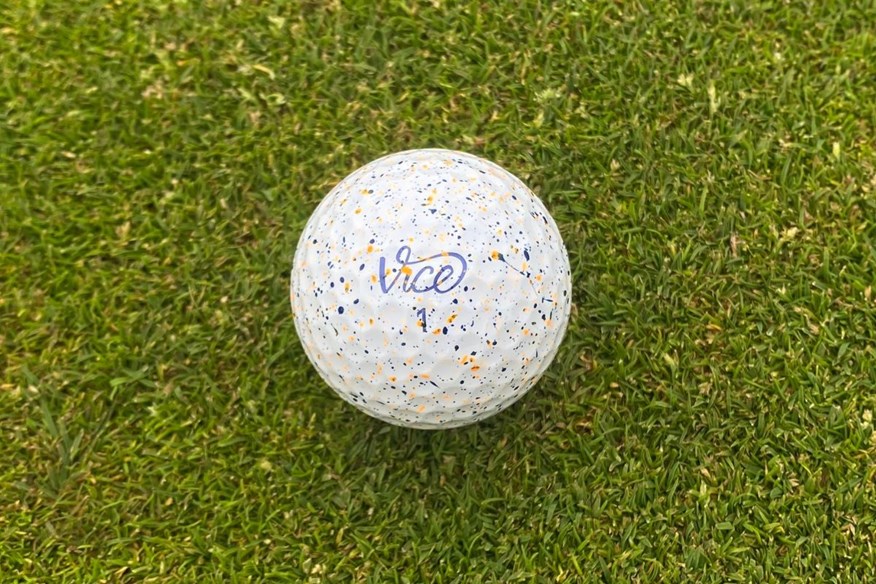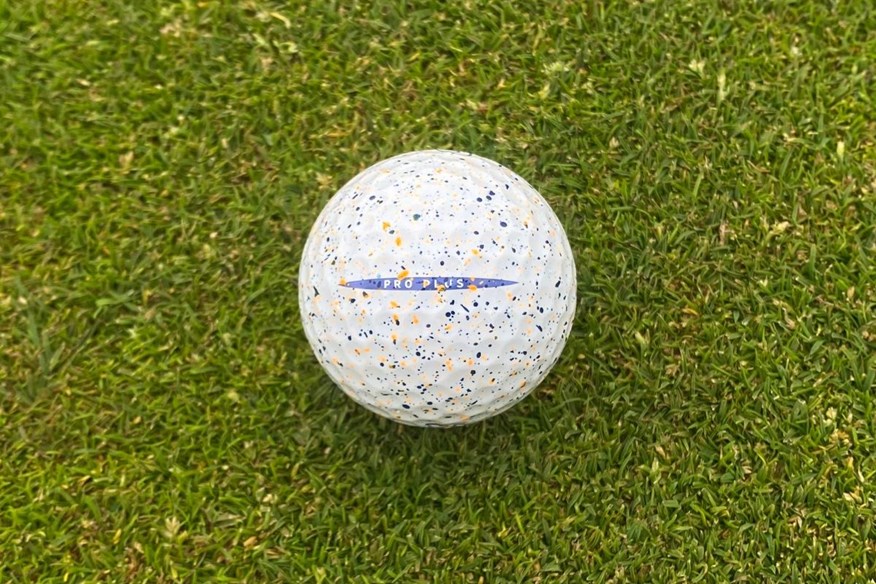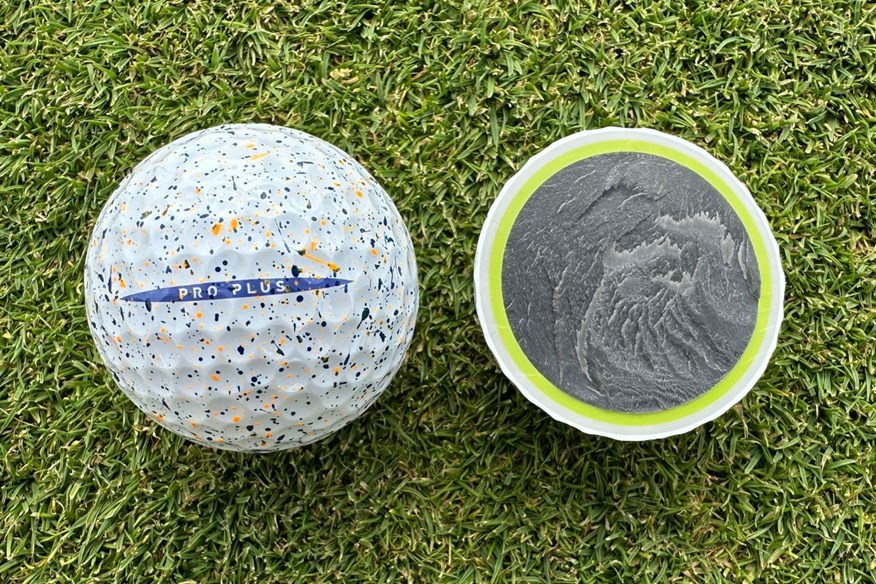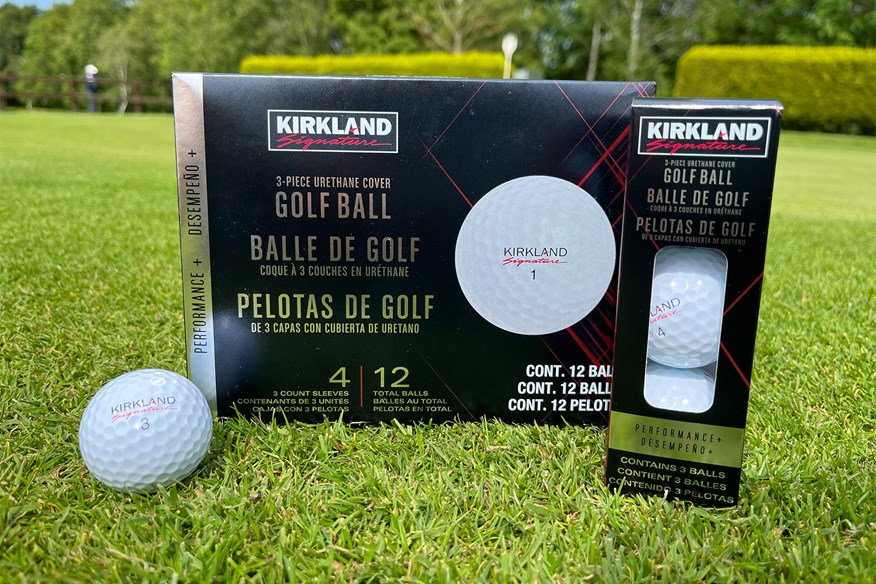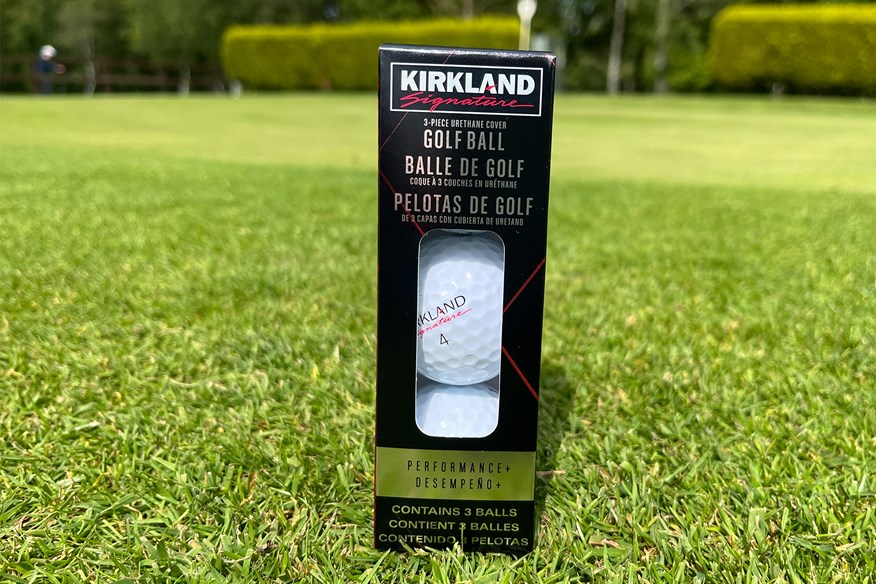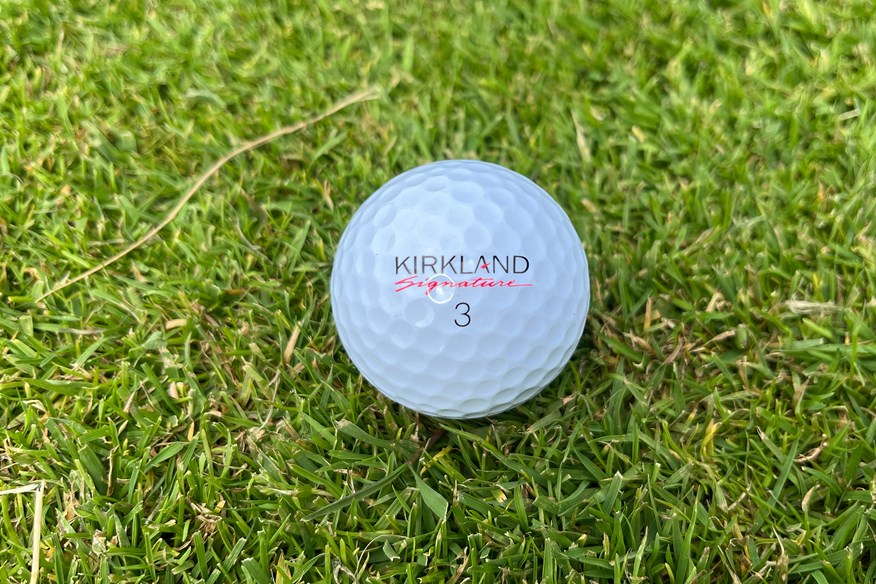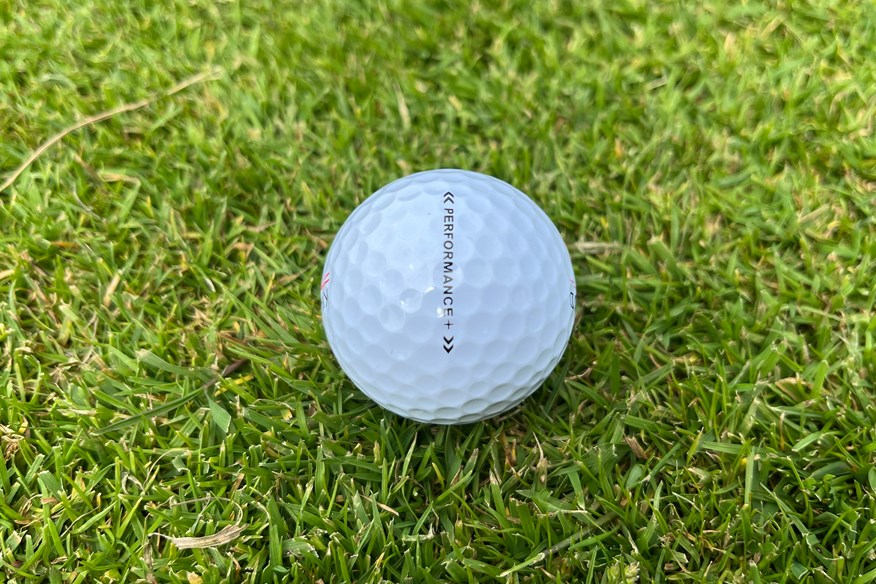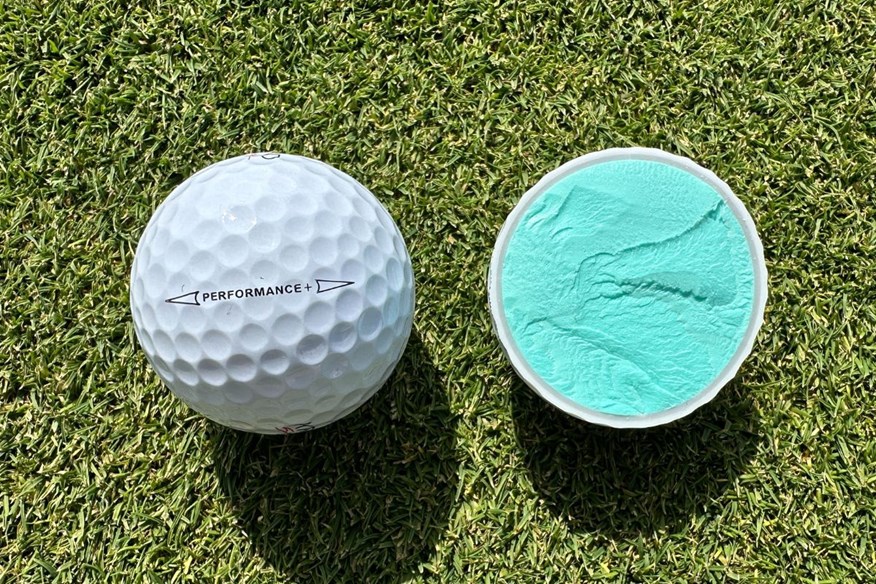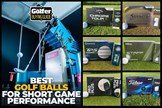Best golf balls for short game 2025: 62 models robot tested and expert reviewed
Last updated:
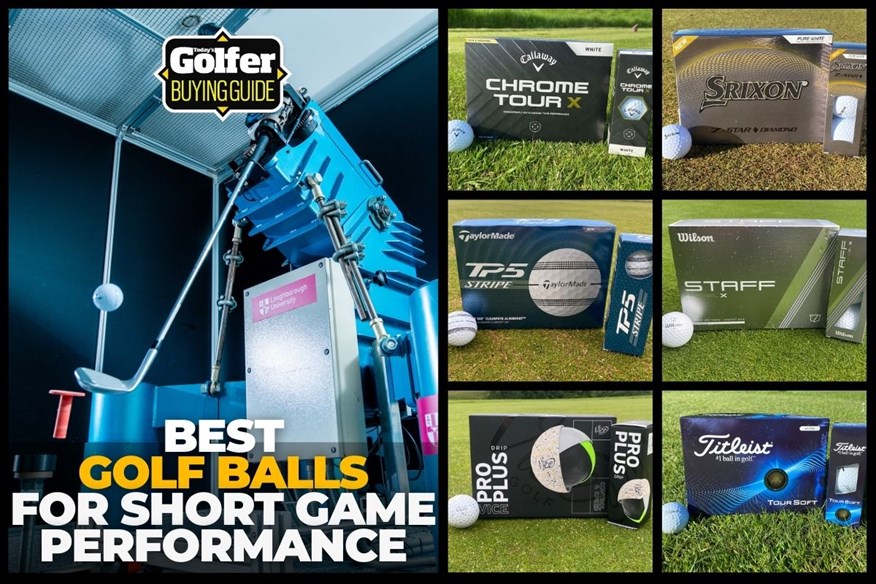
Click here to find out how we conducted our 2025 golf balls test
We’ve tested the most popular and most-played golf balls on an R&D robot and on-course to help you determine which is the best golf ball for short game
Jump to:
When it comes to the short game, some golf balls simply perform better than others. The best golf balls for short game play give you spin, control, and feel around the greens, exactly what you need to chip it close, stop it quickly, and save shots.
Across our testing, the golf balls that excelled around the greens were mainly the high-performance models you’ll also find in our guide to the best premium golf balls, but there are a couple of surprises.
Of the 62 balls we put through our massive robot testing, 10 stood out specifically for their short game performance, coming from eight top brands. We’ve also tested every ball on-course, from elite Tour-level options to popular Direct-to-Consumer (DTC) models, giving you not just robot data, but expert insights on how they handle real-world shots.
- 2025 golf ball robot test: 62 golf balls, 2,232 shots, 50,000 data points… find out what’s No.1 for you
- How we test golf equipment at Today’s Golfer
The key to a ball that shines in the short game is how it reacts with wedges: spin, feel, and its ability to help you get up and down to save par. These balls let you stop chips on a dime, control delicate pitches, and execute bunker shots with confidence.
For golfers who are serious about improving their scoring, investing in a ball that excels in the short game is a game-changer. Yes, these models are often among the higher-priced options – but not all. Think of it this way: one small upgrade can transform your greenside control far more than hours of practice and still costs less than a new wedge or driver.
Best golf balls for short game: At a glance
If your priority is spin, touch, and control around the greens, focusing on the best short game balls is a smart move. Many of them also overlap with categories like the best high-spin golf balls, the best premium golf balls, and even the best golf balls for slow swing speeds.
They’re perfect for golfers who want more stopping power, better feel, and the confidence to attack pins if they’re not on in GIR.
Best golf balls for short game 2025
Golf medal for approach play and short game performance
Best overall golf ball for short game


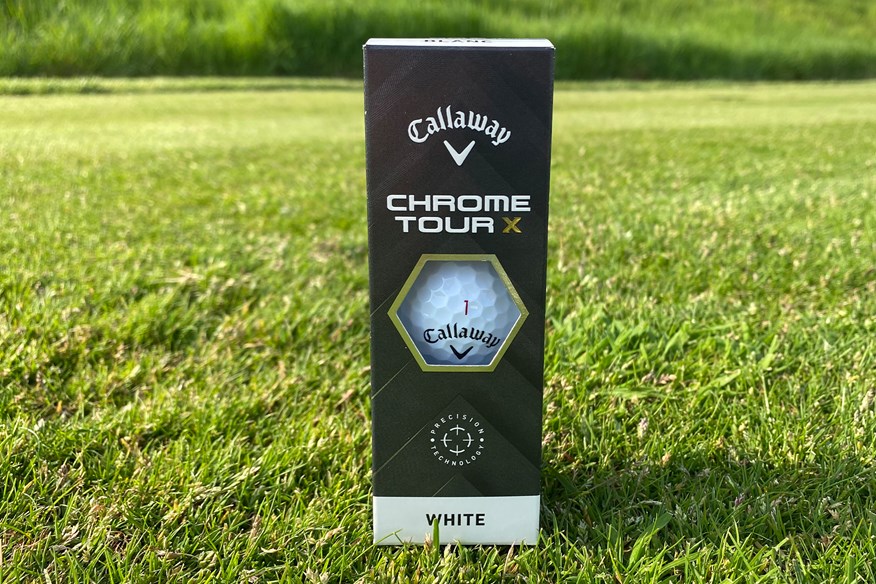

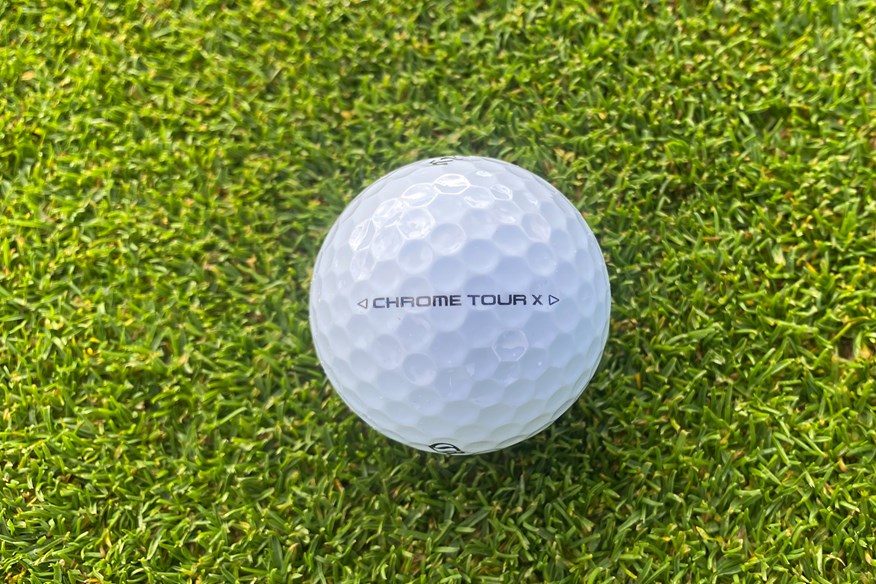
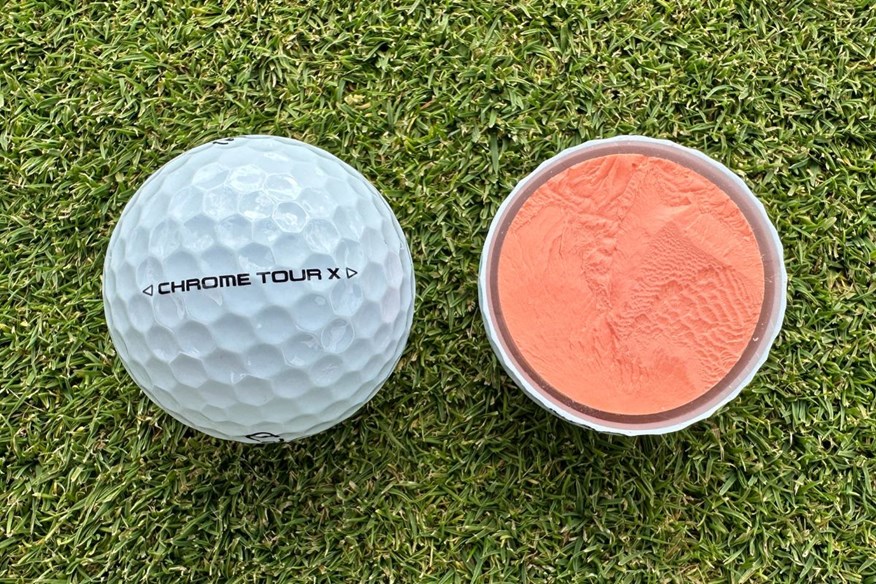
Every golfer wants a golf ball that stops on a dime when playing around the greens because it makes getting up and down so much easier. The golf ball that's going to help you out most around the greens is the Callaway Chrome Tour X.
Of all 62 golf balls tested, the Chrome Tour X is the highest-spinning golf ball around the green. This golf ball was able to generate 6,343rpm, the nearest in this category is the TaylorMade TP5 (6,100), and the second-highest spinning in the test is the Srixon Z-Star Diamond (6,137).
The high-spin nature of the Chrome Tour X does continue through the bag, which isn't an issue when approaching greens. As well as being awarded the gold medal for short game performance, the Chrome Tour X also finished first for approach play.
With the 7-iron shot, this is the highest-spinning golf ball in the test with 5,242rpm. Over 400 revs higher than the second-highest-spinning golf ball in this category (TaylorMade TP5 - 4,823).
The only issue with such a high-spinning golf ball is it hinders distance, so if you prioritise distance over spin, the Chrome Tour is a better option. However, if you want more control and spin, the Chrome Tour X has to be at the top of your list.
Off the tee, you aren't losing much distance with the Chrome Tour X, and at 93mph, this is the second-best four-piece and five-piece golf ball from tee to green.
On-course verdict
Callaway have absolutely smashed it out of the park this year with their four-piece Chrome Tour, Chrome Tour X, and Chrome Tour Triple Diamond golf balls.
Other than having major shelf appeal, the Chrome Tour X is premium for multiple reasons. One of which is that it's widely used by Tour players, and another is that it's a really solid performer from tee to green.
Off the tee, the Chrome Tour X is the highest-spinning Chrome Tour model, which won’t be to everyone’s liking, but for those who struggle to generate height and potentially lose the ball left, then the Chrome Tour X is well worth considering.
The Chrome Tour X spins on command. Playing into and around greens is extremely fun and simple because you can throw this ball at the pin and it will stop.
If you want a golf ball that spins high and is easy to control, there isn't a better option out there.
Read our full Callaway Chrome Tour X golf ball review.
Pros
- Extremely high spin and control when approaching the greens
- Produces brilliant ball speeds and distance
- Played by some of the best players in the world across numerous Tours
Cons
- Callaway's highest-spinning premium golf ball might not be what every golfer needs
| Carry distance (yds) | Driver 114mph - 269.7 | Driver 93mph - 208.9 | Driver 78mph - 160.8 | 7-iron - 156.1 |
| Ball speed (mph) | Driver 114mph - 163.6 | Driver 93mph - 134.3 | Driver 78mph - 113 | 7-iron - 108.7 |
| Backspin (rpm) | Driver 114mph - 2,997 | Driver 93mph - 3,048 | Driver 78mph - 2,921 | 7-iron - 5,242 | Pitch - 6,343 |
| Launch angle (°) | Driver 114mph - 10.8 | Driver 93mph - 12.5 | Driver 78mph - 13.5 | 7-iron - 20.3 | Pitch - 29.5 |
| Descent angle (°) | Driver 114mph - 38.7 | Driver 93mph - 34 | Driver 78mph - 28.8 | 7-iron - 45.3 | Pitch - 34.4 |
| Peak height (yds) | Driver 114mph - 33.3 | Driver 93mph - 23.4 | Driver 78mph - 16 | 7-iron - 29.1 | Pitch - 6.3 |
| Compression (psi) | 111 |
- Hyper fast soft core
- Seamless Tour aero
- High-performance Tour urethane soft cover
- 332 dimples
- 4-Piece construction
- Available in white and yellow
- Alternative models include Triple Track, 360° Triple Track, TruTrack, and Limited Edition patterns
The most dominant 3-piece Tour-level golf ball
Best three-piece golf ball for short game


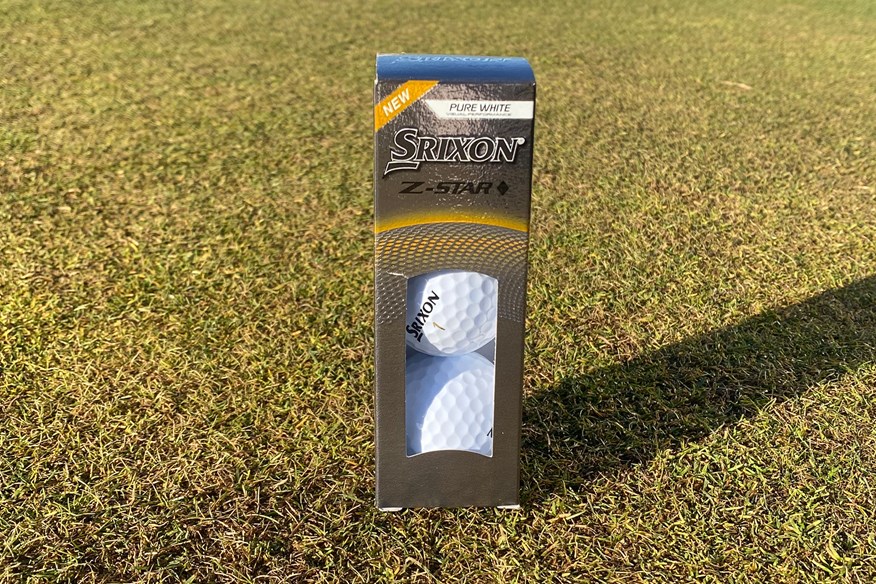
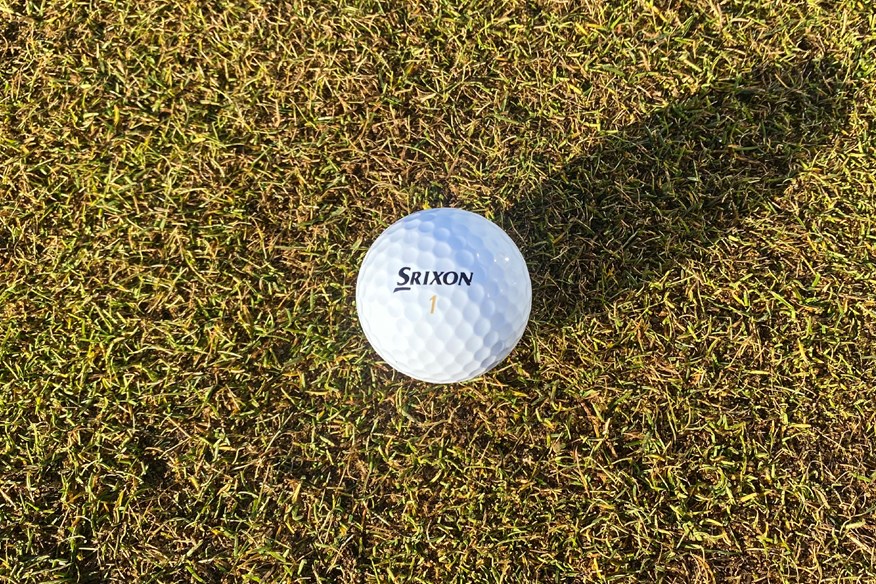
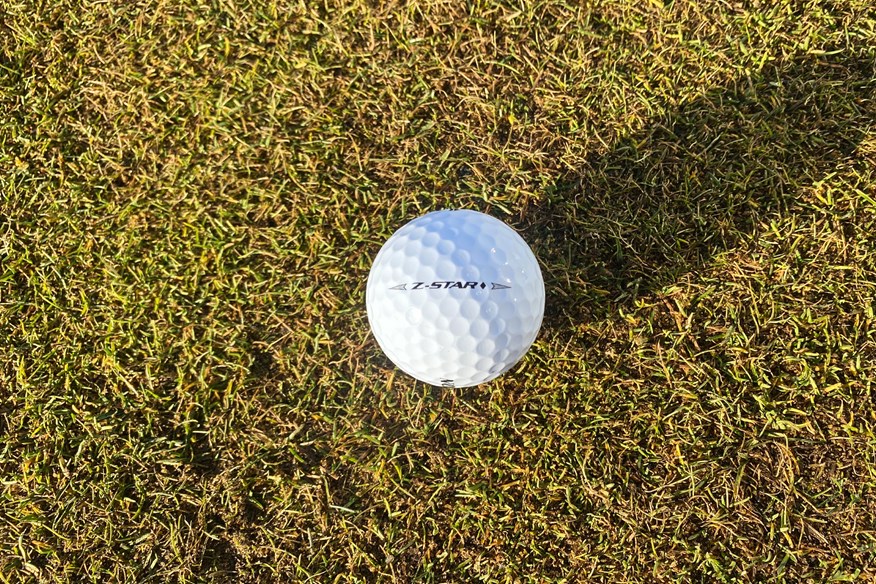
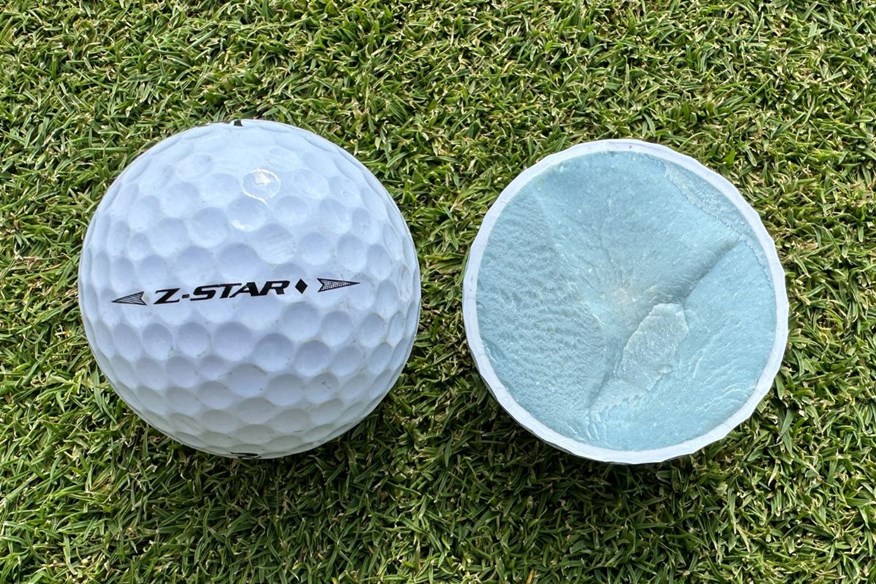
The Srixon Z-Star Diamond is one of the best high-spin golf balls. This golf ball was initially designed for Brooks Koepka, but it's become more popular among other Srixon staffers and amateur golfers. Based on our 2025 robot test results, it's clear to see why!
The Z-Star Diamond won an award in every category, barring one (off-the-tee performance), but where it did rank, it took the top spot. Let's have a quick run through the Z-Star Diamond's awards: gold medal for tee to green performance at 114mph, 93mph, and 78mph, gold medal for approach play, and gold medal for short-game performance.
Around the greens, the Z-Star Diamond is the best three-piece Tour-level golf ball you can play, and the second-best golf ball of all 62 tested, generating 6,137rpm at the 40-yard pitch shot.
However, it's unlikely you'll miss the green in the first place! The Z-Star Diamond is the best golf ball for firing at pins. This golf ball ranks second for descent angle (45.3°), fourth for carry distance consistency, and third for backspin (5,149rpm - one of only three golf balls with over 5,000rpm). This is a recipe for success when you're attacking pins.
The Z-Star Diamond is a consistent golf ball off the tee at all three driver swing speeds. So, whether you swing like Koepka or not, this golf ball will deliver strong numbers for your swing speed. The Z-Star Diamond is above the test average for ball speed and carry distance at all three driver swing speeds.
This golf ball cleaned up in the three-piece Tour-level category! The Z-Star Diamond has to be on your mind if you're looking for a new golf ball.
On-course verdict
The Srixon Z-Star Diamond delivers the optimal performance out of the three golf balls in the 2025 Z-Star range.
The Z-Star Diamond is brilliant if you’re looking for one of the best high-spin golf balls because it’s very easy to generate spin with this model. That being said, it’s definitely lower-spinning off the tee than the previous generation.
I’ve tested a heap of outstanding Tour-level golf balls over the past couple of years, but I don’t think any have impressed me as much as the Z-Star Diamond on approach shots.
If you think a golf ball that travels far and spins high sounds right for your game, then you have to try the Z-Star Diamond, regardless of your ability.
I absolutely love how this golf ball feels off every club face in my bag. I wouldn’t necessarily say it’s particularly firmer than the Z-Star or Z-Star XV, but I think the feedback is much stronger. Thanks to the solid feedback, the response is very satisfying on well-struck shots, but not so much when the contact isn’t as good. However, I think that’s what makes a good golf ball.
Of all the golf balls I’ve played with over the past couple of seasons, this is without a doubt the best-performing golf ball from tee to green.
The Z-Star Diamond performs optimally in every area, which makes it extremely difficult to criticise. It feels great, feedback is amazing, and performance is extraordinary.
I don’t know what more a golf ball can offer!
Read our full Srixon Z-Star Diamond golf ball review.
Pros
- Amazing control from tee to green
- High spinning in the iron and short game
- Fantastic feedback and response
Cons
- High-spinning nature does slightly hinder distance
| Carry distance (yds) | Driver 114mph - 270.7 | Driver 93mph - 207.8 | Driver 78mph - 161 | 7-iron - 153.1 |
| Ball speed (mph) | Driver 114mph - 163.6 | Driver 93mph - 133.8 | Driver 78mph - 113.1 | 7-iron - 108.7 |
| Backspin (rpm) | Driver 114mph - 2,988 | Driver 93mph - 2,838 | Driver 78mph - 2,719 | 7-iron - 5,149 | Pitch - 6,137 |
| Launch angle (°) | Driver 114mph - 11.2 | Driver 93mph - 12.5 | Driver 78mph - 13.6 | 7-iron - 20.5 | Pitch - 30 |
| Descent angle (°) | Driver 114mph - 39.4 | Driver 93mph - 32.6 | Driver 78mph - 28.1 | 7-iron - 45.3 | Pitch - 35.1 |
| Peak height (yds) | Driver 114mph - 34.5 | Driver 93mph - 22.4 | Driver 78mph - 15.7 | 7-iron - 29.3 | Pitch - 6.5 |
| Compression (psi) | 106 |
- Speed dimple pattern
- Thin premium Biomass cover
- Spin skin+ coating
- Fastlayer DG core 2.0
- 338 dimples
- 3-Piece construction
- Available in white and yellow
Silver medal for short game performance
The TaylorMade TP5 is known for being TaylorMade's higher-spinning Tour-level golf ball. It gained popularity on Tour over the last year, having been put in play by Rory McIlroy and one of the best iron players in the world, Collin Morikawa.
A big reason why Tour pros and amateurs elect to play TP5 is because of how soft it is and how well it behaves around the greens. TP5 is the third-highest-spinning golf ball in the entire test (6,100rpm) from the 40-yard pitch shot, and that's good enough for the silver medal in the four- and five-piece category.
Also, TP5 emerged from our robot test as being very impressive for approach play, producing good distance (156.3 yards), the third steepest descent angle (45.3°), the second-highest backspin (4,823), and fastest ball speeds (109mph). However, none of that was good enough to earn the TP5 an award because its carry distance consistency wasn't strong enough.
At slower swing speeds, TP5 is the fourth-best-performing golf ball off the tee. At quicker and moderate swing speeds, the performance isn't as consistent.
If you're looking for a golf ball to help you out around the greens, the TP5 has to be on your list. There's a good reason why so many Tour stars and amateur golfers love TP5, and you might end up being the same once you give it a go.
On-course verdict
I might not be on the same level as some of the TaylorMade Tour players who elect to use TP5 over TP5x, but I think I'm with them on this one.
I love the firmer feel of the TP5x, but I think it's hard to look beyond the TP5s strong greenside performance.
With TP5, you're guaranteed a golf ball that's going to behave if you miss a green from the fairway (or rough). This can be vital in helping you get up and down and save par.
My answer on TP5 vs. TP5x has changed over the years, but currently I'm in the TP5 camp.
Read our full TaylorMade TP5 golf ball review.
Pros
- Incredible short game spin and control
- Very soft feel
- Strong tee to green performance at slow swing speeds
Cons
- Not as responsive as the TP5x
| Carry distance (yds) | Driver 114mph - 268 | Driver 93mph - 208.8 | Driver 78mph - 162.6 | 7-iron - 156.3 |
| Ball speed (mph) | Driver 114mph - 162.3 | Driver 93mph - 134 | Driver 78mph - 113.9 | 7-iron - 109.6 |
| Backspin (rpm) | Driver 114mph - 2,825 | Driver 93mph - 2,911 | Driver 78mph - 2,676 | 7-iron - 4,823 | Pitch - 6,100 |
| Launch angle (°) | Driver 114mph - 10.8 | Driver 93mph - 12.6 | Driver 78mph - 13.6 | 7-iron - 20.7 | Pitch - 30 |
| Descent angle (°) | Driver 114mph - 37.2 | Driver 93mph - 33.4 | Driver 78mph - 28.1 | 7-iron - 45.3 | Pitch - 35.4 |
| Peak height (yds) | Driver 114mph - 31.6 | Driver 93mph - 23.1 | Driver 78mph - 15.8 | 7-iron - 29.8 | Pitch - 6.8 |
| Compression (psi) | 104 |
- Speed-wrapped core
- Progressive 5-layer construction
- Seamless Tour flight dimple pattern
- 322 dimples
- 5-Piece construction
- Available in white only
- Alternative models include Pix, Stripe, and Limited Edition patterns
The most dominant Tour-level golf ball
Best Wilson golf ball for short game
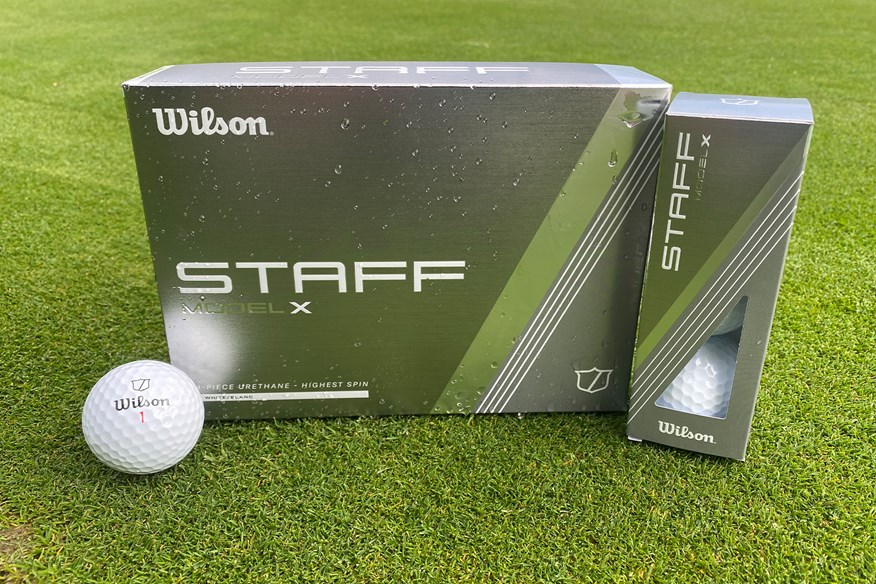

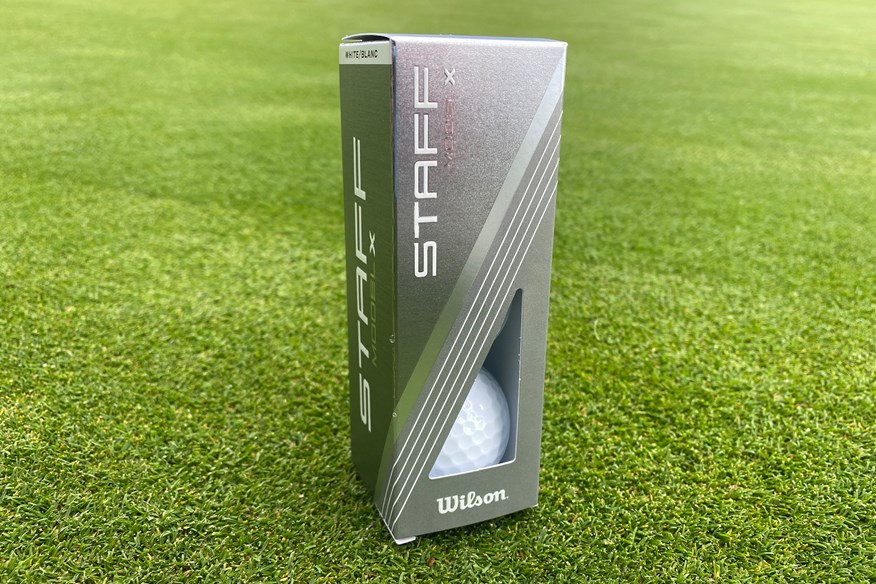
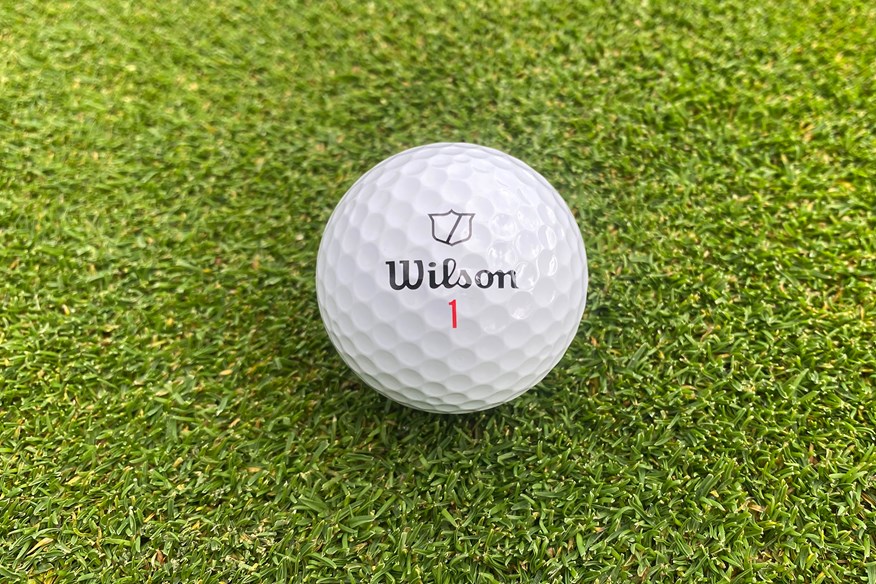
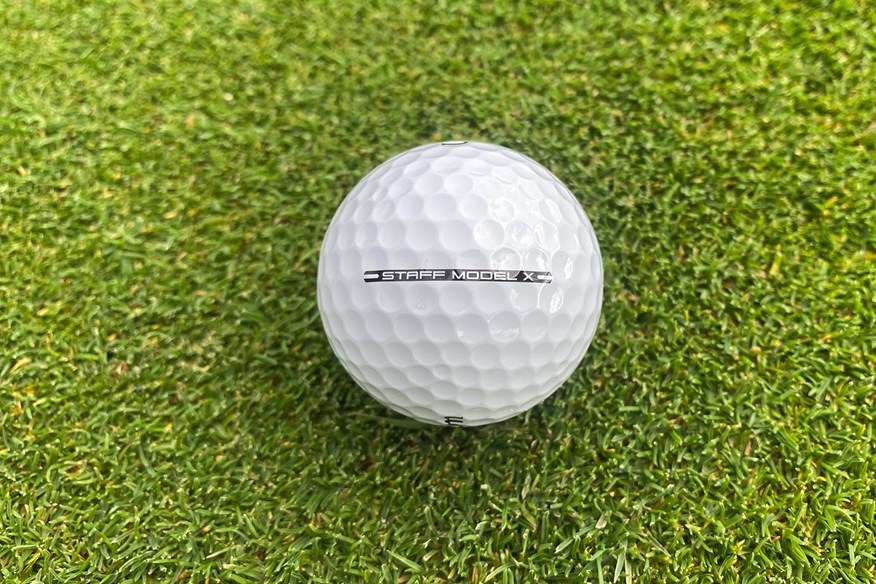

This is arguably the best golf ball in the game. The Wilson Staff Model X is the golf medal winner for tee to green performance at 93mph and 78mph, silver medal winner for tee to green performance at 114mph, silver medal winner for off-the-tee performance, and bronze medal winner for approach play and short game spin.
No other golf ball in our test has received as many awards as the Staff Model X. It's the only golf ball to have received an award in every category.
Staff Model X isn't the longest or fastest golf ball at any of the three driver swing speeds we tested, but it's consistently towards the top of the rankings. It's a higher-spinning golf ball compared to the Staff Model, and that is highlighted with its approach play and short game performance.
This golf ball lands with the steepest descent angle of all 62 tested (45.4°), which helps it easily hit and hold greens. Pair that with the fourth-highest backspin (4,782rpm) and you have a recipe for success.
With the 40-yard pitch shot, Staff Model X generated the third-highest spin (6,091) and again, a steep descent angle (35.5°), meaning this golf ball will stop very quickly when playing around the greens.
On-course verdict
Since being released at the start of 2024, the Staff Model X has been one of my favourite golf balls to play with over the past couple of years. I have a ton of confidence in this model whenever I put it in play. It has become a go-to golf ball for me when I'm not playing my best golf because I know I can trust it to perform well and true.
With its firm feel, it may not appeal to every golfer, but this makes the ball extremely responsive, providing brilliant feedback on all shots. The firm feel is noticeable, compared to softer golf balls, but after a couple of rounds, you practically forget it's a firm golf ball.
Off the tee, the Staff Model X offers slightly more spin than the Staff Model, but that doesn't hinder its overall carry distance. The higher-spinning nature of this model means greenside spin and control is very strong.
The Wilson Staff Model X is the full package. If you're shopping for a premium Tour-level golf ball, this is the No.1 option for golfers of all abilities to consider.
Read our full Wilson Staff Model X golf ball review.
Pros
- Extremely responsive thanks to the firm-feeling
- Performs highly for golfers of all abilities
- Amazing short-game spin and control
Cons
- Higher-spinning than the Staff Model off the tee
| Carry distance (yds) | Driver 114mph - 273.7 | Driver 93mph - 209.8 | Driver 78mph - 162.2 | 7-iron - 156.1 |
| Ball speed (mph) | Driver 114mph - 164.3 | Driver 93mph - 134.6 | Driver 78mph - 113.4 | 7-iron - 109.3 |
| Backspin (rpm) | Driver 114mph - 2,797 | Driver 93mph - 2,792 | Driver 78mph - 2,623 | 7-iron - 4,782 | Pitch - 6,091 |
| Launch angle (°) | Driver 114mph - 11.2 | Driver 93mph - 12.5 | Driver 78mph - 13.8 | 7-iron - 21 | Pitch - 30.4 |
| Descent angle (°) | Driver 114mph - 38.4 | Driver 93mph - 32.6 | Driver 78mph - 28.1 | 7-iron - 45.4 | Pitch - 35.5 |
| Peak height (yds) | Driver 114mph - 33.7 | Driver 93mph - 22.6 | Driver 78mph - 15.9 | 7-iron - 30 | Pitch - 6.7 |
| Compression (psi) | 114 |
- V-Cor advanced performance
- Firm compression core with velocity-boosting additive
- 3SIX2 seamless urethane cover
- 362 dimples
- 4-Piece construction
- Available in white and yellow
Vice's fastest and longest golf ball
The Vice Pro Plus is one of four golf balls in this category that didn't receive an award, but don't let that put you off. That's largely due to its tee performance. While this is the fastest and longest Vice golf ball, it's not overly competitive against other four-piece and five-piece golf balls.
At 114mph, Pro Plus is the third-lowest performing golf ball, the lowest performing at 93mph, and the third-lowest performing at 78mph. However, for approach play and short game performance, the Pro Plus does improve.
The backspin generated by the Pro Plus with the 7-iron shot is the third-highest within this category (4,807rpm), and the descent angle is 45.1°. The Pro Plus finished just outside the podium places for approach play performance.
It's the same story for short game performance. With 6,090rpm, Pro Plus finished fourth for short game performance by one revolution.
With the Vice Pro Plus, you might not have the most competitive golf ball off the tee, but from the fairway and around the greens, you can expect a golf ball that'll spin easily and is easy to control.
On-course verdict
This is the only golf ball in Vice's Pro range I recommend. That might sound harsh, considering the Pro is one of the best three-piece Tour-level golf balls, but in my on-course experience, I've not seen enough from the Pro that would make me recommend it over the Pro Plus.
This golf ball loses absolutely zero marks for distance, and as a whole, off the tee, I really couldn’t criticise the Pro Plus (except for one thing, which I’ll come to later). My main gripe is its performance around the greens; I just don’t feel as though it spins enough compared to other X-model golf balls.
It could be down to my chipping action, but I definitely find my joy around the greens with other golf balls when it comes to spin and control. Approaching greens, I feel very much the same as I do with regards to this golf ball’s performance off the tee.
Throughout the bag, I get very little feedback from any strike, whether it be good or bad. I distinctly remember hitting a really good tee shot on the 8th hole on the Ailsa Course at Turnberry and saying that it felt “dead”. When you really nail a drive, you want to be saying “that felt amazing,” but it left me feeling underwhelmed.
On the putting green, I feel as though there are more responsive golf balls than the Pro Plus, but you can’t argue with the roll, because it’s solid.
Ultimately, my overarching opinion on the feel and response of the Pro Plus is – as I’ve already mentioned – underwhelming.
Read our full Vice Pro Plus golf ball review.
Pros
- Solid performance from tee to green
- Brilliant value for a premium product
- A versatile model that works for ranging swing speeds
Cons
- A slightly muted feeling and limited feedback
| Carry distance (yds) | Driver 114mph - 271.9 | Driver 93mph - 208.2 | Driver 78mph - 160.5 | 7-iron - 155.2 |
| Ball speed (mph) | Driver 114mph - 163.6 | Driver 93mph - 133.7 | Driver 78mph - 114.3 | 7-iron - 112.9 |
| Backspin (rpm) | Driver 114mph - 2,780 | Driver 93mph - 2,848 | Driver 78mph - 2,643 | 7-iron - 4,807 | Pitch - 6,090 |
| Launch angle (°) | Driver 114mph - 10.9 | Driver 93mph - 12.7 | Driver 78mph - 13.7 | 7-iron - 20.8 | Pitch - 30.3 |
| Descent angle (°) | Driver 114mph - 37.4 | Driver 93mph - 33 | Driver 78mph - 27.8 | 7-iron - 45.1 | Pitch - 35.4 |
| Peak height (yds) | Driver 114mph - 32.2 | Driver 93mph - 22.8 | Driver 78mph - 15.6 | 7-iron - 29.4 | Pitch - 6.6 |
| Compression (psi) | 116 |
- Ultra thin cast urethane cover
- Versatile magnesium ionomer outer mantle
- Surlyn grade inner mantle
- Lightweight speed core
- 336 dimples
- 4-Piece construction
- Available in white and lime
- Alternative models include Drip, Shade, and Tracer
Gold medal for short game performance
Best two-piece golf ball for short game


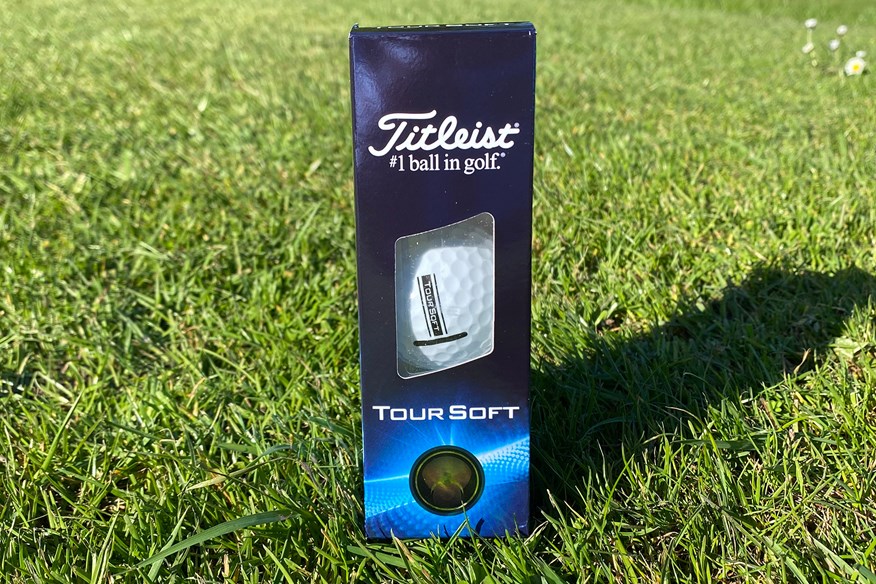
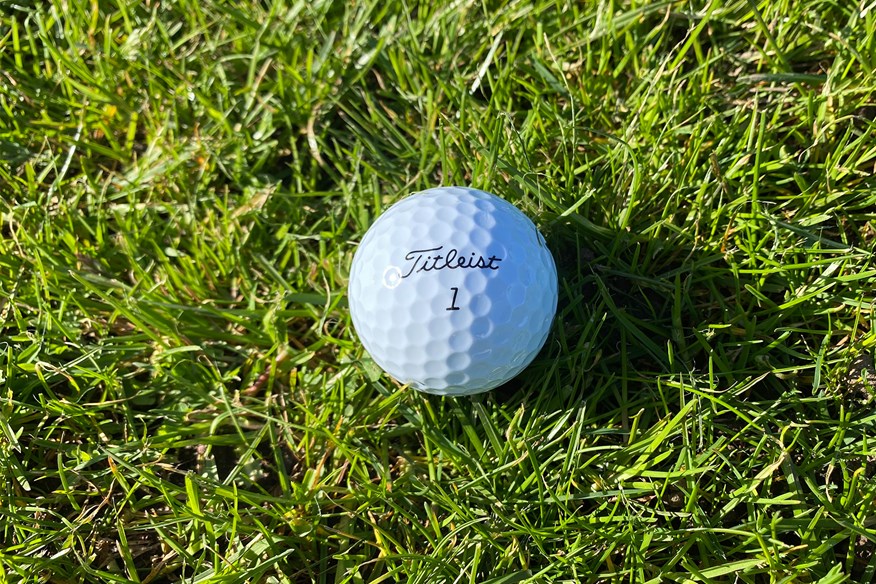
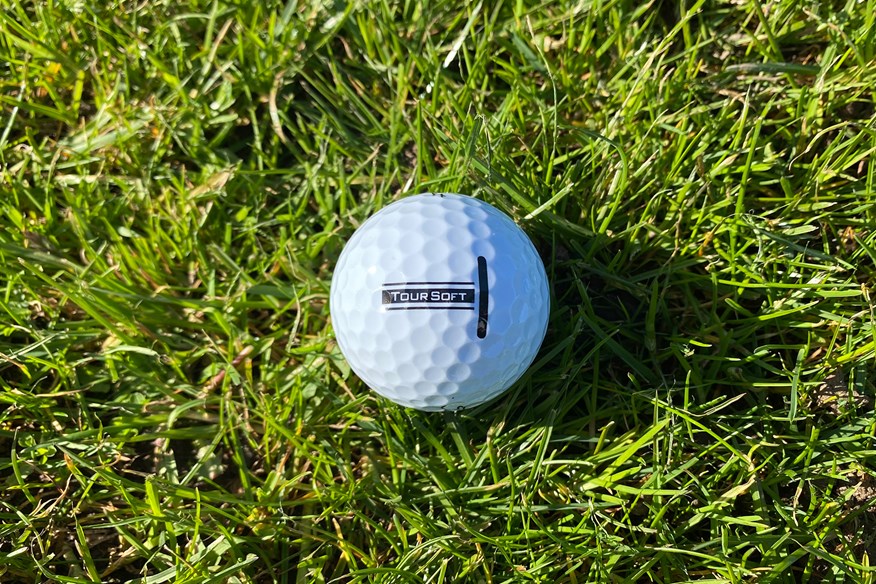
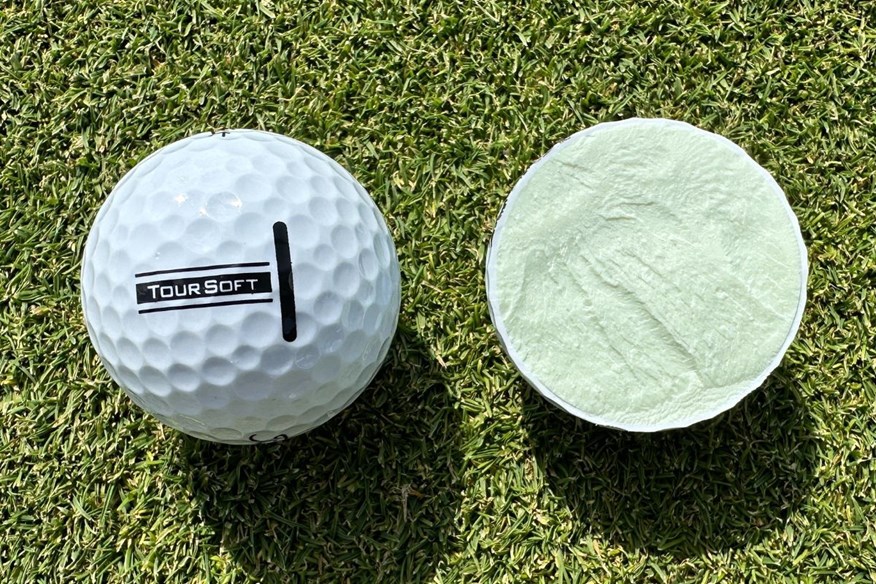
Moving to approach play, this golf ball is the bronze medal winner in this area. Tour Soft produces the second-highest spin (4,774rpm) and second-steepest descent angle (45.2°), but it is the shortest two-piece golf ball (154.2yds).
Off-the-tee performance has this golf ball very closely matched with Titleist's distance two-piece golf ball - Velocity. Granted, Tour Soft is slightly shorter and slower at all three swing speeds. However, giving up less than a yard off the tee at every swing speed is probably worth it for the approach play and short game performance gains. It performed well enough at 114mph to earn the silver medal for tee to green performance.
Tour Soft is a super consistent golf ball in every area. If you're looking for a two-piece golf ball that'll do everything, this golf ball needs to be on your mind.
On-course verdict
This is one of the best-feeling golf balls I've had the pleasure of playing with purely because of how soft it is. I'm not always a fan of soft golf balls, but when they feel as good as the Tour Soft does, there's nothing to dislike.
The feedback and response throughout the bag is exactly what you want with a soft golf ball, but it's most enjoyable when playing around the greens because you can really feel the ball interacting with the grooves.
Around the greens, this ball generates amazing spin and control that's capable of challenging the best high-spin golf balls.
Moving away from the green, I didn't notice anything special about the Tour Soft's performance, but in the same breath, there's nothing to criticise. If anything, this ball performs better than you would expect from a two-piece model.
The Titleist Tour Soft is great value, and if you want a soft-feeling golf ball, this is the model you want.
Pros
- Amazing short-game spin and control
- Incredibly soft and responsive
- Great value
Cons
- Short distance in iron play
| Carry distance (yds) | Driver 114mph - 271.3 | Driver 93mph - 208.5 | Driver 78mph - 160.4 | 7-iron - 154.2 |
| Ball speed (mph) | Driver 114mph - 163.3 | Driver 93mph - 133.4 | Driver 78mph - 112.8 | 7-iron - 108.3 |
| Backspin (rpm) | Driver 114mph - 2,776 | Driver 93mph - 2,731 | Driver 78mph - 2,438 | 7-iron - 4,774 | Pitch - 6,075 |
| Launch angle (°) | Driver 114mph - 11.1 | Driver 93mph - 13 | Driver 78mph - 14 | 7-iron - 21.1 | Pitch - 30.4 |
| Descent angle (°) | Driver 114mph - 37.6 | Driver 93mph - 32.8 | Driver 78mph - 27.3 | 7-iron - 45.2 | Pitch - 35.7 |
| Peak height (yds) | Driver 114mph - 32.6 | Driver 93mph - 22.8 | Driver 78mph - 15.4 | 7-iron - 29.5 | Pitch - 6.8 |
| Compression (psi) | 95 |
- Large, faster core
- Reformulated thin fusablend cover
- Proprietary quadrilateral dipyramid dimple design
- 346 dimples
- 2-Piece construction
- Available in white, green, and yellow
- An alternative model is AIM 360
Gold medal for short game performance
Kirkland golf balls are known for being high-spinning. The V2.0 was, and so is the V3.0. That's not an issue if you struggle to get the ball in the air or find it difficult to hit and hold greens. It also means the Signature V3.0 is amazing around the greens.
The Signature V3.0 is the gold medal winner for short game performance, in this category, generating 6,050rpm. Of all 62 golf balls tested, it's the seventh-highest-spinning golf ball.
Spin persists throughout the bag, and with the 7-iron shot, the Signature V3.0 is once again the highest-spinning three-piece club golfer model (4,861rpm). It also lands with the steepest descent angle (45°).
You might think the high-spinning nature will hurt how the V3.0 performs off the tee, but is that the case? Definitely not. The V3.0 is the bronze medal winner for off-the-tee performance.
It does generate a lot of spin, but it's also long and fast at all three swing speeds. At the fastest swing speed, it's the third-longest (271yds) and fastest (163.5mph), at the moderate swing speed, it's the third-longest (208yds) and fastest (133.6mph), and at the slower swing speed, it's the third-longest and fourth-fastest (112.8mph).
With the Kirkland Signature V3.0, you are signing yourself up to play with a high-spin golf ball, but if you need spin, it's one of the best models you can play with.
On-course verdict
Over the years, these golf balls have been highly regarded by many golfers and heavily scrutinised by others. Kirkland’s Signature three-piece golf balls are known for delivering high spin, and this is no different with their V3.0, as it ranks among the best high-spin golf balls.
The biggest issue the V3.0 has is that its spin compromises distance, but for some golfers, that won’t be an issue whatsoever.
When I took this ball out on the course, I couldn’t criticise its distance in the long game, but then again, high-spin golf balls suit my game.
I’m a big believer that for the majority of golfers, spin is your friend. You’re guaranteed a golf ball that easily generates spin by playing with the V3.0. Therefore, I believe that more golfers would benefit from playing with this golf ball than not playing with this golf ball.
I’m not normally a fan of soft-feeling golf balls, but I must say that the V3.0 feels good off the club face. I wouldn’t say that the response from this golf ball is particularly strong throughout the bag, but around the greens, there is a pleasant sensation when you clip the ball cleanly – something I think most golfers appreciate.
I think the Kirkland Signature V3.0 is a very strong golf ball. I would never expect to see it played on Tour, but for amateur golfers, it’s definitely one to consider. If you struggle to generate spin or if you just enjoy having a high-spinning golf ball, then it’s a fantastic option.
Read our full Kirkland Signature V3.0 golf ball review.
Pros
- Amazing price per ball considering the quality
- Combines soft feel, long distance, and high spin
- Impressive consistent ball flight
Cons
- Don't expect optimal carry distance
| Carry distance (yds) | Driver 114mph - 271 | Driver 93mph - 208 | Driver 78mph - 160.5 | 7-iron - 154.3 |
| Ball speed (mph) | Driver 114mph - 163.5 | Driver 93mph - 133.6 | Driver 78mph - 112.8 | 7-iron - 108.6 |
| Backspin (rpm) | Driver 114mph - 2,873 | Driver 93mph - 2,734 | Driver 78mph - 2,572 | 7-iron - 4,861 | Pitch - 6,050 |
| Launch angle (°) | Driver 114mph - 11.1 | Driver 93mph - 12.7 | Driver 78mph - 13.9 | 7-iron - 20.7 | Pitch - 30 |
| Descent angle (°) | Driver 114mph - 38.3 | Driver 93mph - 32.3 | Driver 78mph - 27.7 | 7-iron - 45 | Pitch - 35.1 |
| Peak height (yds) | Driver 114mph - 33.2 | Driver 93mph - 22.3 | Driver 78mph - 15.6 | 7-iron - 29.1 | Pitch - 6.5 |
| Compression (psi) | 107 |
- Increased core size
- Mantle with new proprietary cover
- Proprietary TPU with improved scuff resistance and impact endurance
- Modified dimple depth for optimized flight height
- 338 dimples
- 3-Piece construction
- Available in white only
Bronze medal for off-the-tee performance
Best distance-oriented golf ball for short game
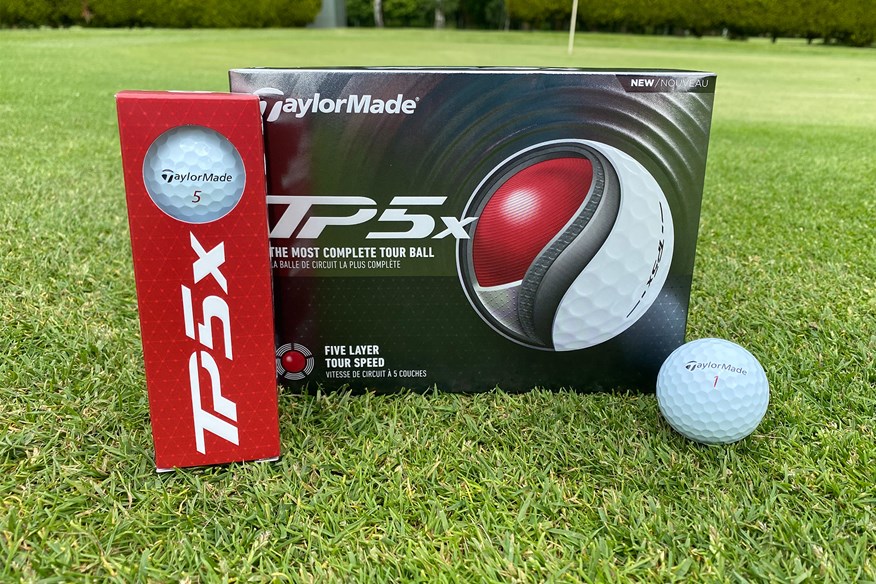

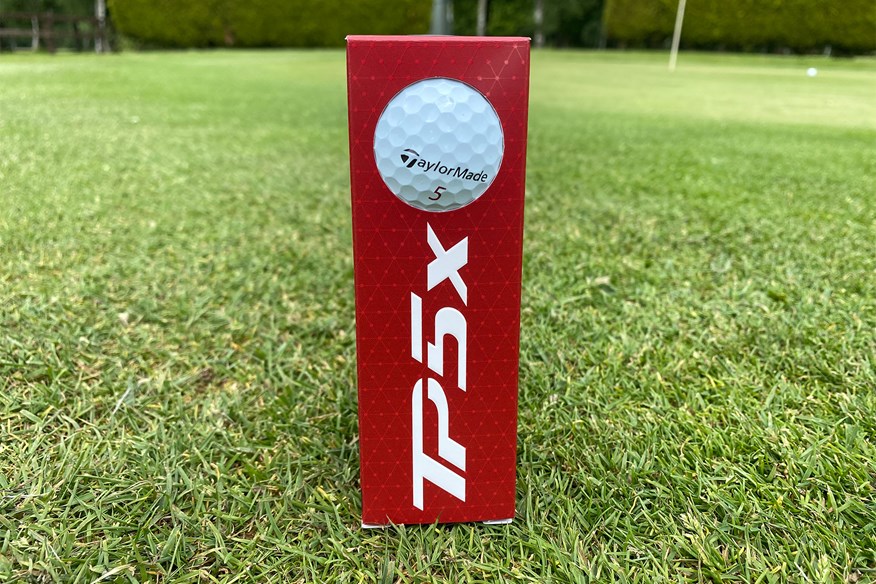
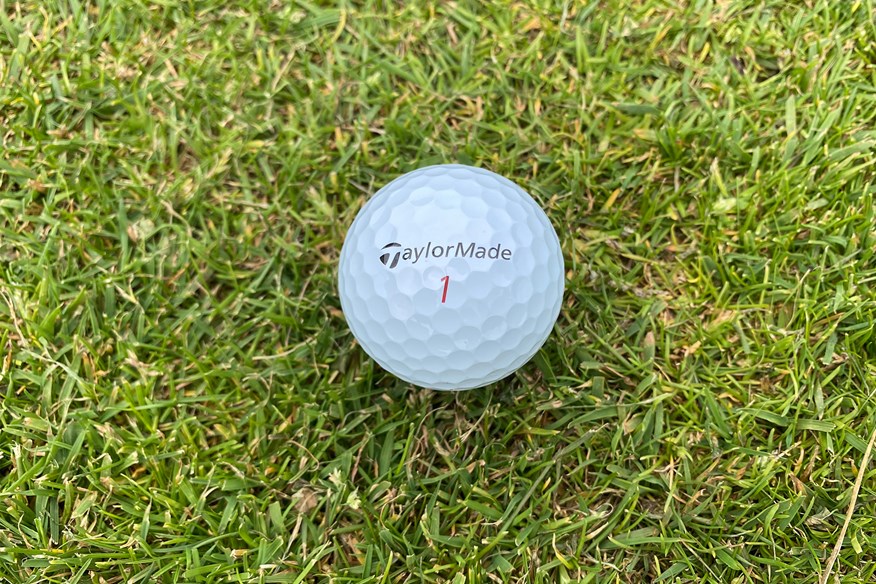
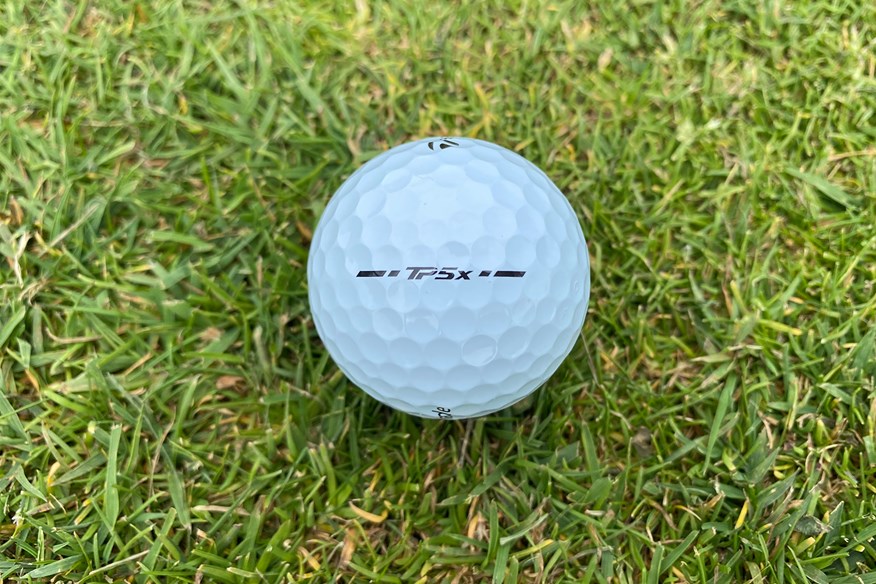
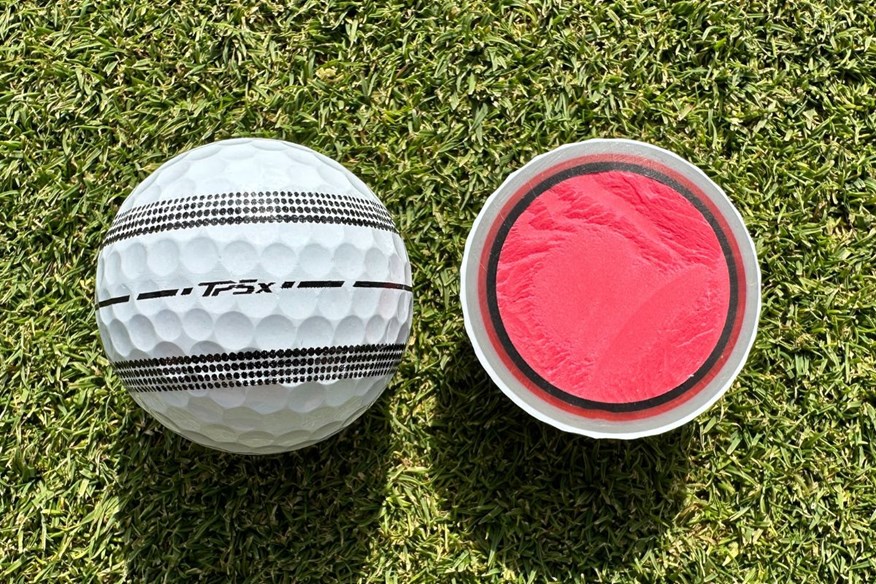
The TaylorMade TP5x steps up into a league of its own off the tee at the 78mph driver swing speed. It's a yard longer than the second-best performing golf ball and 0.4mph faster. At 93mph, TP5x is strong once again, being the fastest golf ball and the second longest.
Off-the-tee performance of the TP5x at both swing speeds is impressive, and it helps it achieve the bronze medal for off-the-tee performance. At 114mph, there is a drop-off in performance, but not enough to hinder the TP5x's overall score.
Approaching and playing around greens, the TP5x isn't as high-spinning as the TP5, but this model is sold as a low-spinning golf ball. With that in mind, it delivers a good amount of spin with the 7-iron (4,609rpm) and 40-yard pitch shots (6,042rpm).
TP5x delivers fast ball speeds, which makes it a very efficient golf ball. If you prioritise distance, the TP5x has to be in your thoughts, but not if you have a quick swing speed. If you're looking for more spin and control, I'd suggest looking at the TP5 instead.
On-course verdict
I'm very split between whether I prefer the firmer and more distance-oriented TP5x or the softer and higher-spinning TP5. If I'm being honest, my game benefits much more from a higher-spinning golf ball, so I think I have to side with Rory on this one and go for the TP5.
The reason I'm split is because I much prefer the firmer feel and response of the TP5x. I'm not particularly interested in the extra distance the TP5x offers because I'd much rather give up a couple of yards off the tee in exchange for putting the ball a couple of yards closer from the fairway.
The TP5x is well represented on Tour, despite a couple of players - including Rory - moving over to the TP5. It's clear to see why this five-piece golf ball is popular on Tour and in the amateur ranks, because it is solid from tee to green with an emphasis on eeking out a couple more yards.
I'm slightly in favour of the TP5, but if you ask me again in a couple of months, but opinion could well have changed.
Read our full TaylorMade TP5x golf ball review.
Pros
- High feedback and response
- Quality performance from tee to green
- Widely played on Tour
Cons
- Not as much short-game spin as the TP5
| Carry distance (yds) | Driver 114mph - 272.5 | Driver 93mph - 210.3 | Driver 78mph - 163.6 | 7-iron - 157.2 |
| Ball speed (mph) | Driver 114mph - 163.7 | Driver 93mph - 134.9 | Driver 78mph - 114.3 | 7-iron - 109.4 |
| Backspin (rpm) | Driver 114mph - 2,700 | Driver 93mph - 2,777 | Driver 78mph - 2,548 | 7-iron - 4,609 | Pitch - 6,042 |
| Launch angle (°) | Driver 114mph - 11 | Driver 93mph - 12.5 | Driver 78mph - 13.7 | 7-iron - 21.1 | Pitch - 29.9 |
| Descent angle (°) | Driver 114mph - 37.1 | Driver 93mph - 32.5 | Driver 78mph - 27.7 | 7-iron - 45.2 | Pitch - 35.1 |
| Peak height (yds) | Driver 114mph - 32.1 | Driver 93mph - 22.6 | Driver 78mph - 15.8 | 7-iron - 29.9 | Pitch - 6.6 |
| Compression (psi) | 117 |
- Speed-wrapped core
- Progressive 5-layer construction
- Seamless Tour flight dimple pattern
- 322 dimples
- 5-Piece construction
- Available in white only
- Alternative models include Pix, Stripe, and Limited Edition patterns
Silver medal for short game performance
Best Bridgestone golf ball for short game
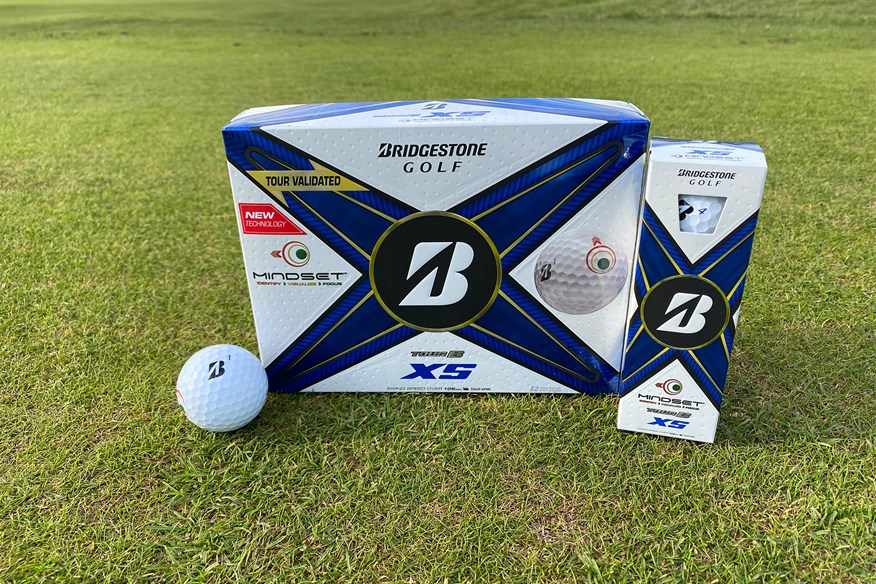

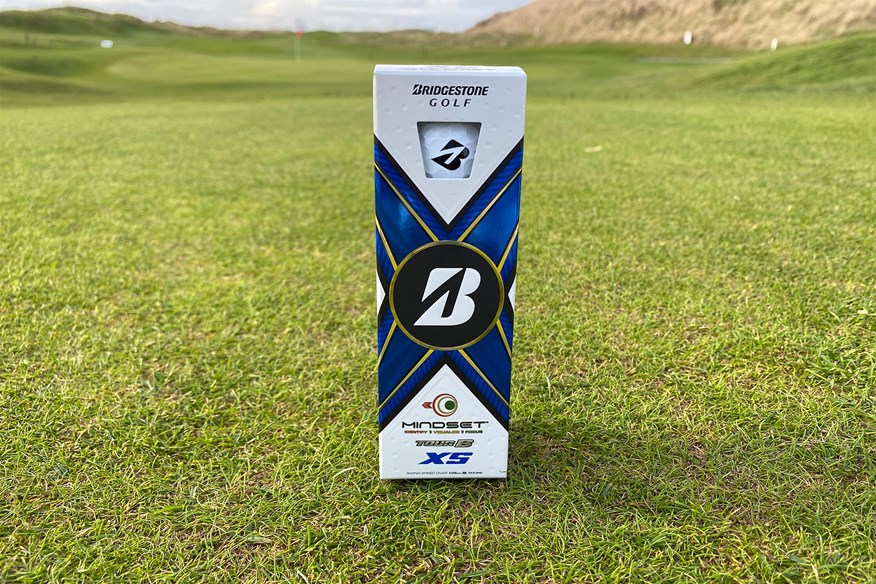
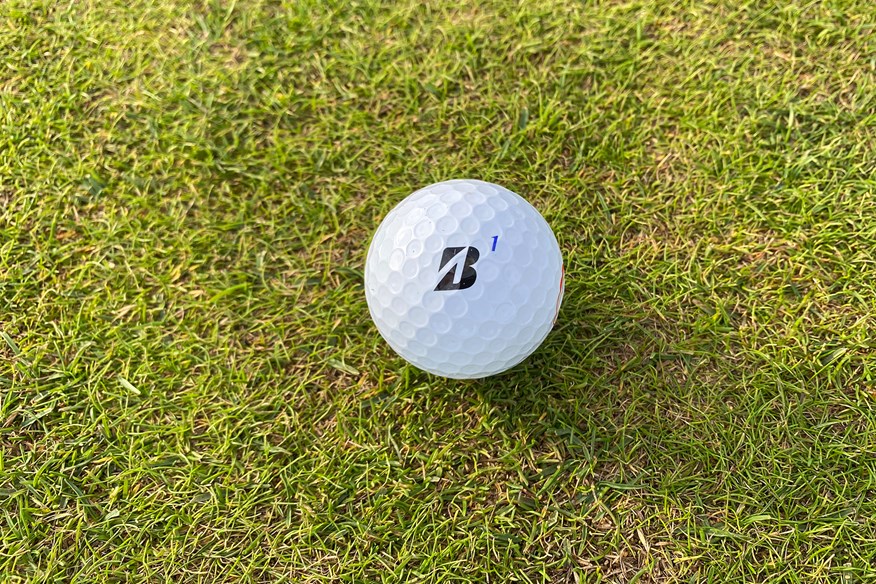
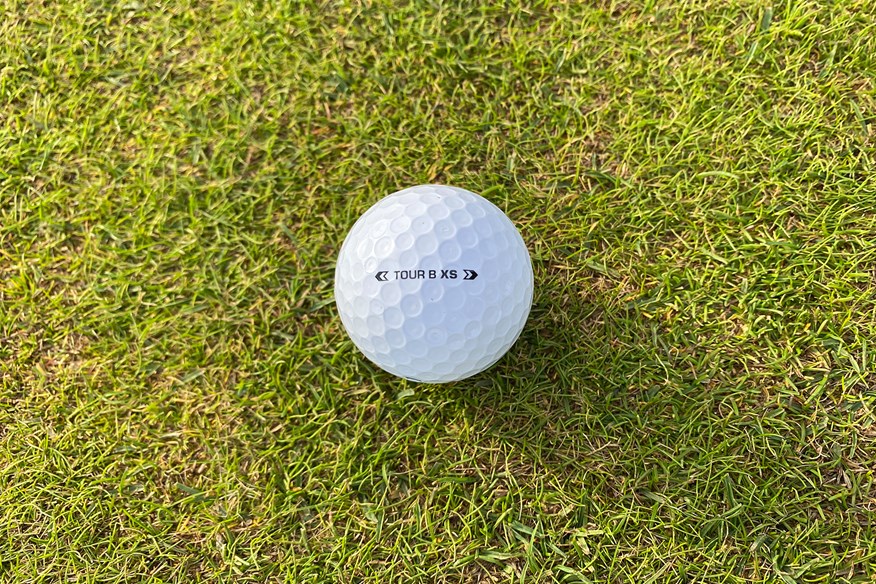
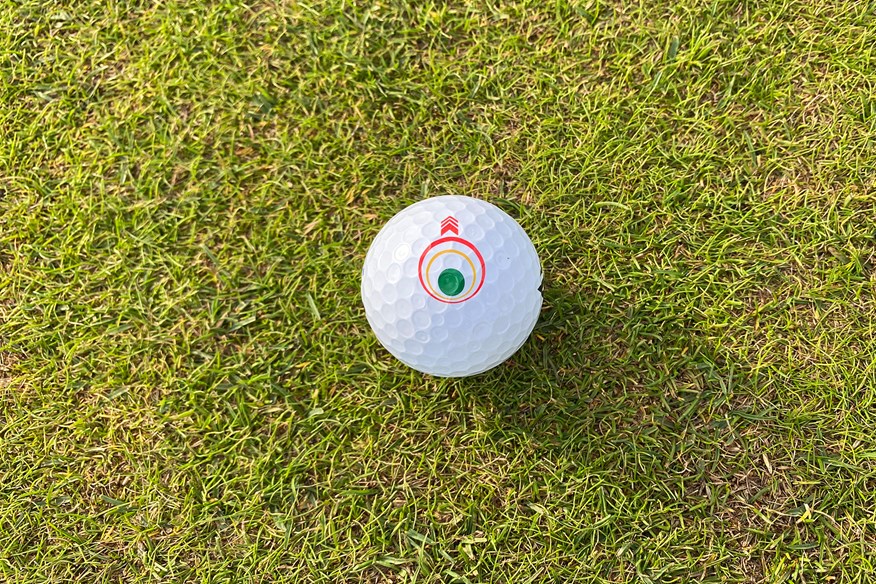
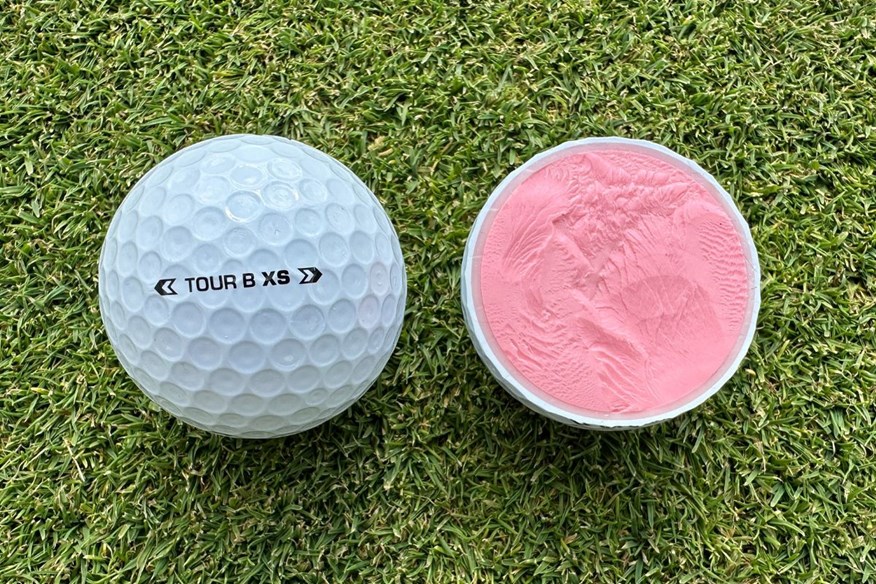
Bridgestone's Tour B XS is designed to spin higher than the Tour B X and produce a softer feeling. While our robot can't comment on the feel of this golf ball, it can tell us if it is, in fact, higher-spinning than its firmer counterpart.
Winning the silver medal for short game performance, the Tour B XS is higher-spinning around the greens than the Tour B X (6,036rpm vs. 5,972rpm). It's not drastically higher spinning, but you can expect more grab and control.
That transfers into approach play. Within the three-piece Tour-level category, the Tour B XS is the highest-spinning golf ball with over 5,000 rpm - one of only two (5,170). It's also the second-highest-spinning golf ball in the entire test.
Unfortunately, due to the dominance of the Z-Star range, the Tour B XS just misses out on a podium place for approach play performance.
Off the tee, the high-spinning nature of the Tour B XS hurts its overall performance. At all three driver swing speeds, it ranks low, being the highest-spinning model at 78mph (second overall) and 93mph (first overall), and the second-highest-spinning golf ball at 114mph (third overall).
There'll be a lot of people put off by how much the Tour B XS spins, and it's a big reason why Tiger Woods switched to the Tour B X. However, if you struggle to generate spin, the Tour B XS is a golf ball you should definitely consider. I love it for that exact reason, and while it might not go as far off the tee, it makes up for the reduced distance by offering amazing spin and control.
On-course verdict
The Tour B XS isn’t a model found on Tour; the Tour B X is a much more popular model among the pros. For a golfer who’s looking for a soft-feeling golf ball that easily generates spin and has a driver swing speed north of 105mph, the Tour B XS is definitely a model to consider.
Some golf balls are able to work for a wide range of golfers. However, I wouldn’t say that’s the case with the Tour B XS.
As a golfer who needs help adding spin and height off the tee, the Tour B XS is a brilliant golf ball for me. I feel as though from tee to green, this ball performs incredibly well and delivers everything I need and want from a golf ball.
The Tour B XS is a soft-feeling golf ball, which I’m not normally a fan of, but I am with the Tour B XS because it’s very responsive. I think you get a lot of feedback from every shot you play with the Tour B XS.
Read our full Bridgestone Tour B XS golf ball review.
Pros
- Incredible feel and response from every shot
- Amazing spin and control around the green
- Mindset is a brilliant tool
Cons
- Not the most versatile model
| Carry distance (yds) | Driver 114mph - 268.4 | Driver 93mph - 206.7 | Driver 78mph - 160.5 | 7-iron - 153.5 |
| Ball speed (mph) | Driver 114mph - 162.7 | Driver 93mph - 133.6 | Driver 78mph - 112.8 | 7-iron - 109 |
| Backspin (rpm) | Driver 114mph - 2,964 | Driver 93mph - 3,059 | Driver 78mph - 2,795 | 7-iron - 5,170 | Pitch - 6,036 |
| Launch angle (°) | Driver 114mph - 11 | Driver 93mph - 12.3 | Driver 78mph - 13.7 | 7-iron - 20.3 | Pitch - 30 |
| Descent angle (°) | Driver 114mph - 38.6 | Driver 93mph - 33.6 | Driver 78mph - 28.4 | 7-iron - 45.2 | Pitch - 35.3 |
| Peak height (yds) | Driver 114mph - 33.1 | Driver 93mph - 22.8 | Driver 78mph - 15.8 | 7-iron - 29.1 | Pitch - 6.7 |
| Compression (psi) | 99 |
- REACTIV X System
- REACTIV iQ Smart Cover Technology
- XCLRNT mid-layer
- Gradational Core
- Dual Dimple
- Seamless Cover
- 330 dimples
- 3-Piece construction
- Available in white and yellow
- An alternative model is the Mindset
Gold medal for driver performance
Best low-spin golf ball for short game
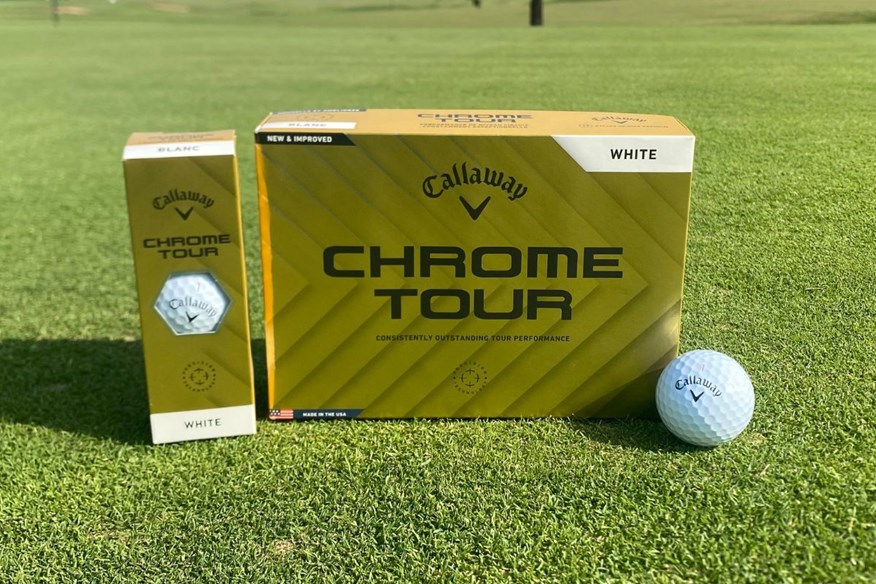

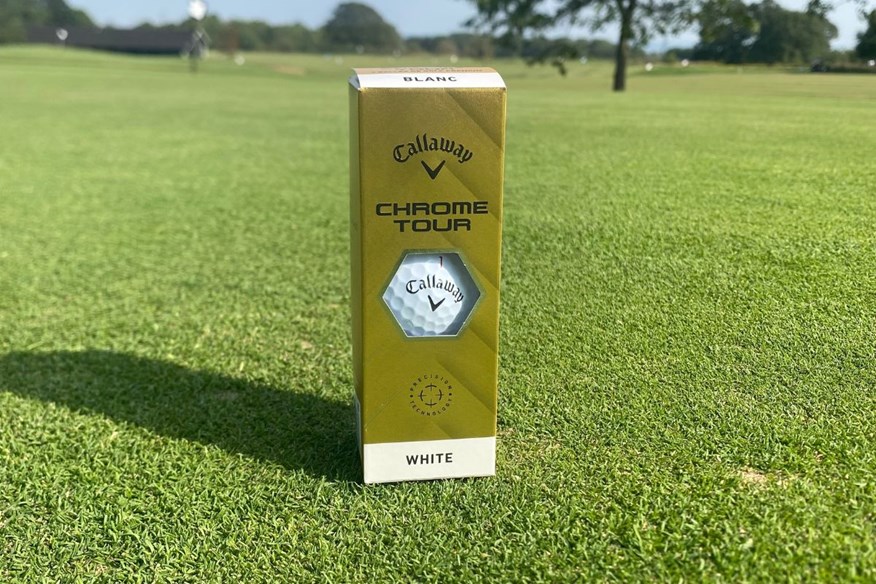
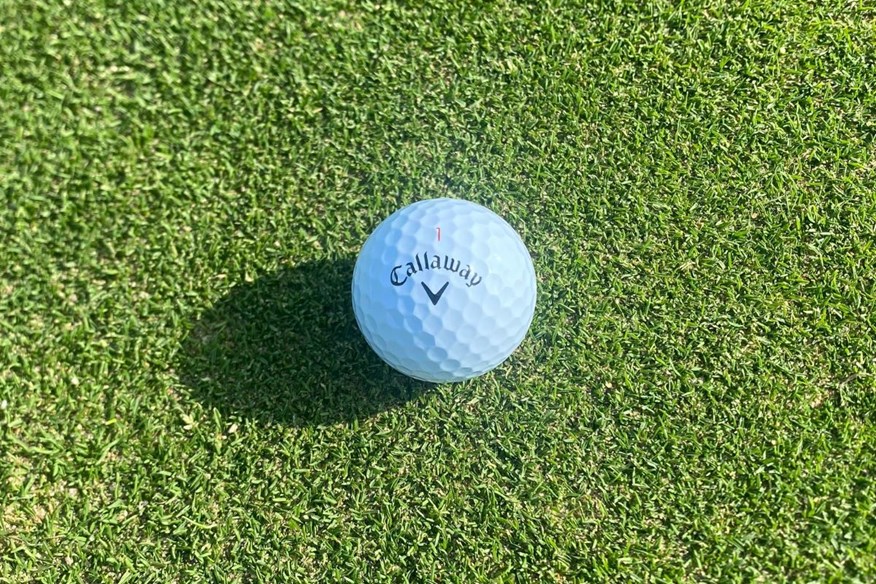

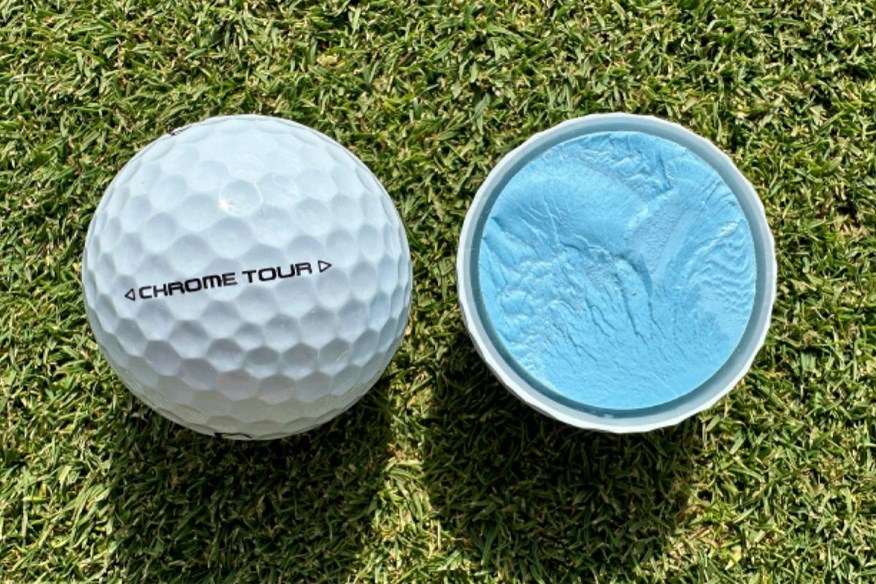
If you're looking to improve your tee game, the Callaway Chrome Tour is the ball you should choose out of all four-piece and five-piece golf balls.
At 114mph, the Callaway Chrome Tour is the fastest and longest golf ball of the entire test, being the only golf ball out of all 62 to exceed 275 carry yards. It's a similar story at 93mph, being the longest golf ball off the tee of all 62 tested.
Chrome Tour isn't as competitive with carry distance at slower swing speeds, but being lower spinning than other golf balls in this category helps to produce competitive total distance. Also, ball speed is joint-third fastest.
Where the Chrome Tour is low spinning off the tee, it's not the case approaching or playing around greens.
Chrome Tour is the complete package, and definitely a golf ball you have to consider if you want a premium, Tour-level golf ball that's fast and long off the tee, with good iron game and short game spin and control.
On-course verdict
I've had a lot of enjoyment playing with the Chrome Tour, most notably when I took this model out for a spin on The Old Course at St. Andrews. It's extremely difficult to find a negative considering it's long off the tee, high-spinning around the greens, and feels amazing.
This isn't a soft-feeling golf ball, but it's not firm either, it's somewhere in the middle, which is very pleasant because it offers great feedback as well as amazing feel.
The Chrome Tour is very strong off the tee, and it is noticeably longer than the Chrome Tour X on the course because it's not as high-spinning. The Chrome Tour is extremely popular on Tour, and it's clear to see why.
The Chrome Tour and Tour X are very closely matched, but the Chrome Tour is probably more versatile; it's just not as high-spinning when approaching and playing around greens.
Read our full Callaway Chrome Tour golf ball review.
Pros
- Impressive distance and ball speed
- Played by some of the best golfers in the game
- Very consistent golf balls
Cons
- Not as high-spinning as the Chrome Tour X
| Carry distance (yds) | Driver 114mph - 275.4 | Driver 93mph - 210.8 | Driver 78mph - 161.8 | 7-iron - 155.6 |
| Ball speed (mph) | Driver 114mph - 165.1 | Driver 93mph - 134.7 | Driver 78mph - 113.4 | 7-iron - 108.7 |
| Backspin (rpm) | Driver 114mph - 2,689 | Driver 93mph - 2,701 | Driver 78mph - 2,508 | 7-iron - 4,658 | Pitch - 6,036 |
| Launch angle (°) | Driver 114mph - 11 | Driver 93mph - 12.7 | Driver 78mph - 13.9 | 7-iron - 20.9 | Pitch - 30.1 |
| Descent angle (°) | Driver 114mph - 37.3 | Driver 93mph - 32.5 | Driver 78mph - 27.6 | 7-iron - 44.9 | Pitch - 35.2 |
| Peak height (yds) | Driver 114mph - 32.6 | Driver 93mph - 22.7 | Driver 78mph - 15.7 | 7-iron - 29.4 | Pitch - 6.5 |
| Compression (psi) | 113 |
- Hyper fast soft core
- Seamless Tour aero
- High-performance Tour urethane soft cover
- 332 dimples
- 4-Piece construction
- Available in white and yellow
- Alternative models include Triple Track, 360° Triple Track, TruTrack, and Limited Edition patterns
Best golf balls for short game: Robot test data
View the full golf ball robot test results.
| Golf ball | Callaway Chrome Tour X | Srixon Z-Star Diamond | TaylorMade TP5 | Wilson Staff Model X | Vice Pro Plus | Titleist Tour Soft | Kirkland Signature V3.0 | TaylorMade TP5x | Bridgestone Tour B XS | Callaway Chrome Tour |
| Compression | 111.0 | 106 | 104.0 | 114 | 116.0 | 95 | 107.0 | 117.0 | 99 | 113 |
| 114mph Driver Ball Speed (mph) | 163.6 | 163.6 | 162.3 | 164.3 | 163.8 | 163.3 | 163.5 | 163.7 | 162.7 | 165.1 |
| 114mph Driver Launch Angle (°) | 10.8 | 11.2 | 10.8 | 11.2 | 10.9 | 11.1 | 11.1 | 11.0 | 11.0 | 11.0 |
| 114mph Driver Backspin (rpm) | 2997 | 2988 | 2825 | 2797 | 2780 | 2776 | 2873 | 2700 | 2964 | 2689 |
| 114mph Driver Carry Distance (yds) | 269.7 | 270.7 | 268.0 | 273.7 | 271.9 | 271.3 | 271.0 | 272.5 | 268.4 | 275.4 |
| 114mph Driver Height (yds) | 33.3 | 34.5 | 31.6 | 33.7 | 32.2 | 32.6 | 33.2 | 32.1 | 33.1 | 32.6 |
| 114mph Driver Descent Angle (°) | 38.7 | 39.4 | 37.2 | 38.4 | 37.4 | 37.6 | 38.3 | 37.1 | 38.6 | 37.3 |
| 93mph Driver Ball Speed (mph) | 134.3 | 133.8 | 134.0 | 134.6 | 133.7 | 133.4 | 133.6 | 134.9 | 133.6 | 134.7 |
| 93mph Driver Launch Angle (°) | 12.5 | 12.5 | 12.6 | 12.5 | 12.7 | 13.0 | 12.7 | 12.5 | 12.3 | 12.7 |
| 93mph Driver Backspin (rpm) | 3048 | 2838 | 2911 | 2792 | 2848 | 2731 | 2734 | 2777 | 3059 | 2701 |
| 93mph Driver Carry Distance (yds) | 208.9 | 207.8 | 208.8 | 209.8 | 208.2 | 208.5 | 208.0 | 210.3 | 206.7 | 210.8 |
| 93mph Driver Height (yds) | 23.4 | 22.4 | 23.1 | 22.6 | 22.8 | 22.8 | 22.3 | 22.6 | 22.8 | 22.7 |
| 93mph Driver Descent Angle (°) | 34.0 | 32.6 | 33.4 | 32.6 | 33.0 | 32.8 | 32.3 | 32.5 | 33.6 | 32.5 |
| 78mph Driver Ball Speed (mph) | 113.0 | 113.1 | 113.9 | 113.4 | 112.9 | 112.8 | 112.8 | 114.3 | 112.8 | 113.4 |
| 78mph Driver Launch Angle (°) | 13.5 | 13.6 | 13.6 | 13.8 | 13.7 | 14.0 | 13.9 | 13.7 | 13.7 | 13.9 |
| 78mph Driver Backspin (rpm) | 2921 | 2719 | 2676 | 2623 | 2643 | 2438 | 2572 | 2548 | 2795 | 2508 |
| 78mph Driver Carry Distance (yds) | 160.8 | 161.0 | 162.6 | 162.2 | 160.5 | 160.4 | 160.5 | 163.6 | 160.5 | 161.8 |
| 78mph Driver Height (yds) | 16.0 | 15.7 | 15.8 | 15.9 | 15.6 | 15.4 | 15.6 | 15.8 | 15.8 | 15.7 |
| 78mph Driver Descent Angle (°) | 28.8 | 28.1 | 28.1 | 28.1 | 27.8 | 27.3 | 27.7 | 27.7 | 28.4 | 27.6 |
| 7-Iron Ball Speed (mph) | 108.7 | 108.7 | 109.6 | 109.3 | 108.9 | 108.3 | 108.6 | 109.4 | 109.0 | 108.7 |
| 7-Iron Launch Angle (°) | 20.3 | 20.5 | 20.7 | 21.0 | 20.8 | 21.1 | 20.7 | 21.1 | 20.3 | 20.9 |
| 7-Iron Backspin (rpm) | 5242 | 5149 | 4823 | 4782 | 4807 | 4774 | 4861 | 4609 | 5170 | 4658 |
| 7-Iron Carry Distance (yds) | 152.5 | 153.1 | 156.3 | 156.1 | 155.2 | 154.2 | 154.3 | 157.2 | 153.5 | 155.6 |
| 7-Iron Height (yds) | 29.1 | 29.3 | 29.8 | 30.0 | 29.4 | 29.5 | 29.1 | 29.9 | 29.1 | 29.4 |
| 7-Iron Descent Angle (°) | 45.3 | 45.3 | 45.3 | 45.4 | 45.1 | 45.2 | 45.0 | 45.2 | 45.2 | 44.9 |
| 40-Yard Pitch Ball Speed (mph) | 46.2 | 46.3 | 47.1 | 46.3 | 46.1 | 46.6 | 46.2 | 46.3 | 46.7 | 45.9 |
| 40-Yard Pitch Launch Angle (°) | 29.5 | 30.0 | 30.0 | 30.4 | 30.3 | 30.4 | 30.0 | 29.9 | 30.0 | 30.1 |
| 40-Yard Pitch Backspin (rpm) | 6343 | 6137 | 6100 | 6091 | 6090 | 6075 | 6050 | 6042 | 6036 | 6036 |
| 40-Yard Pitch Carry Distance (yds) | 38.8 | 39.3 | 40.7 | 39.6 | 39.2 | 40.0 | 39.2 | 39.3 | 40.0 | 38.8 |
| 40-Yard Pitch Height (yds) | 6.3 | 6.5 | 6.8 | 6.7 | 6.6 | 6.8 | 6.5 | 6.6 | 6.7 | 6.5 |
| 40-Yard Pitch Descent Angle (°) | 34.4 | 35.1 | 35.4 | 35.5 | 35.4 | 35.7 | 35.1 | 35.1 | 35.3 | 35.2 |
Best golf balls for short game 2025: Buying guide
Ability
Regardless of your ability, you can benefit from playing with a golf ball that excels in the short game. The reason is simple: your scoring shots are played from 100 yards and in. A ball that delivers more spin and better feel will help you stop it closer to the hole more often.
That doesn’t mean beginners should rush out and spend £50+ on a dozen premium balls, but it does mean even higher-handicap golfers can gain strokes by using a ball that performs better around the greens. More experienced golfers, meanwhile, will see the greatest rewards, as the control and consistency of a short-game focused ball makes a noticeable difference.
Budget
Premium golf balls designed for short-game performance are usually at the higher end of the price scale, often £40–£50 per dozen. That’s because they use urethane covers and multi-layer construction, which add cost but also unlock more spin and precision.
That said, there are still very capable, cheaper models and Direct-to-Consumer (DTC) balls that offer strong short-game performance at around half the price. The key is to find out whether the ball you’re playing genuinely helps your short game. If a £30 option gives you the stopping power and confidence you need, it’s a smart choice. If it doesn’t, then it’s worth investing more.
Feel
Feel is one of the most important aspects of short game play. A ball that feels responsive off the face of your wedges can give you confidence to execute delicate shots. Most golfers prefer a softer-feeling ball in this area, though firmer models can provide clearer feedback for some players.
While nearly every modern ball is softer than the “rocks” of decades past, premium urethane-covered models still stand out for their buttery feel and responsiveness on chips and pitches.
Performance
Short-game performance comes down to control, consistency, and confidence. The best short game golf balls provide high spin and precision into greens while maintaining enough consistency off the tee to keep you in play.
Not all models behave the same way; some generate more spin, others launch lower, and some provide a slightly firmer feel. Finding the one that matches your game is key. That’s why robot testing, on-course trials, and personal preference all come into play.
Spin
Spin is the defining feature of a great short game ball. A urethane cover paired with multiple layers creates the friction and responsiveness needed to grip on wedge shots. This allows you to stop the ball quickly, control your roll-out, and attack pins with confidence.
Not all cheaper two-piece golf balls can replicate this level of spin because they lack the layered construction and softer cover material. However, Titleist have found a winning combination with the Tour Soft. Other two-piece models may go far off the tee, but they’ll often skid or release too much when landing on the green. If spin control matters most to you, a premium ball is the way to go.
Distance
Distance is always nice, but when it comes to short game performance, it should be the last factor on your list. The scoring zone is inside 100 yards, and that’s where the right golf ball earns its keep.
If you’re testing balls, work backwards from the green. Start with wedge shots, then move to mid-irons, and finally test off the tee. The ball that performs best in the short game is almost always the one you’ll score best with overall, even if it isn’t the absolute longest.
Color
Colour can also play a role in your short game performance, especially in terms of visibility. High-visibility yellow or orange balls can make it easier to track your shots and see the break. Some models also come with alignment-focused visual patterns (like TaylorMade Pix or Callaway Triple Track), which can help with putting and aim.
Don’t dismiss coloured balls as gimmicks; the same construction is there under the paint, and if it helps you see and line up better, it’s a win.
Alignment
More and more golf balls are being released with enhanced alignment, and even standard golf balls have a more prominent alignment stamp now than they’ve ever had. The majority of brands now offer golf balls with enhanced alignment aids. The enhanced alignment aids can be extremely useful for putting and even lining up shots on the tee. Another plus of alignment golf balls is the alignment serves as a tool for finding your golf ball either in the air or among the trees.
Best golf balls for short game: FAQs
What to read next
For performance insights tailored to your swing speed and preferences, head to our results hubs:
- Best 4 and 5-piece golf balls
- Best 3-piece golf balls
- Best 2-piece golf balls
- Best golf balls for fast swing speeds
- Best golf balls for average swing speeds
- Best golf balls for slow swing speeds
- Best golf balls for distance
- Best golf balls for approach play
- Best golf ball for mid-handicaps
- Best golf balls for beginners
- Most consistent golf balls
